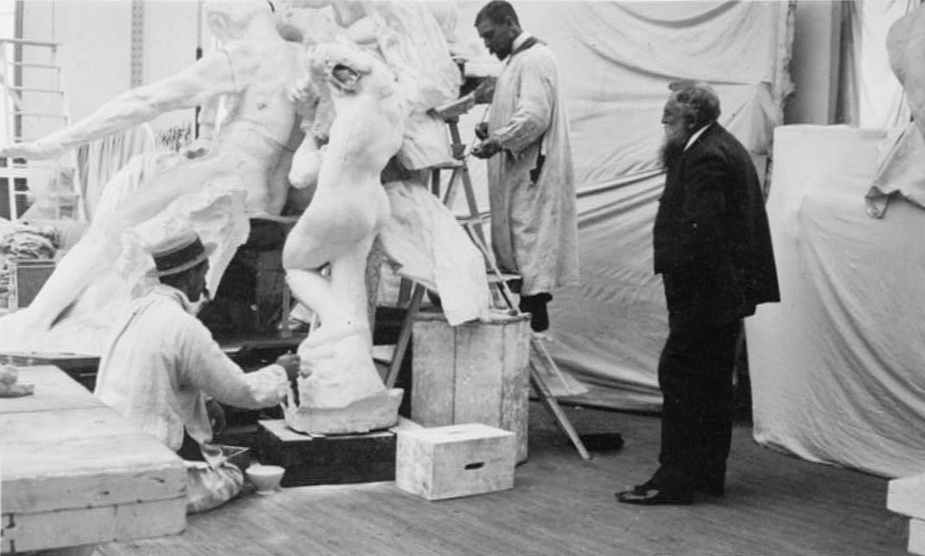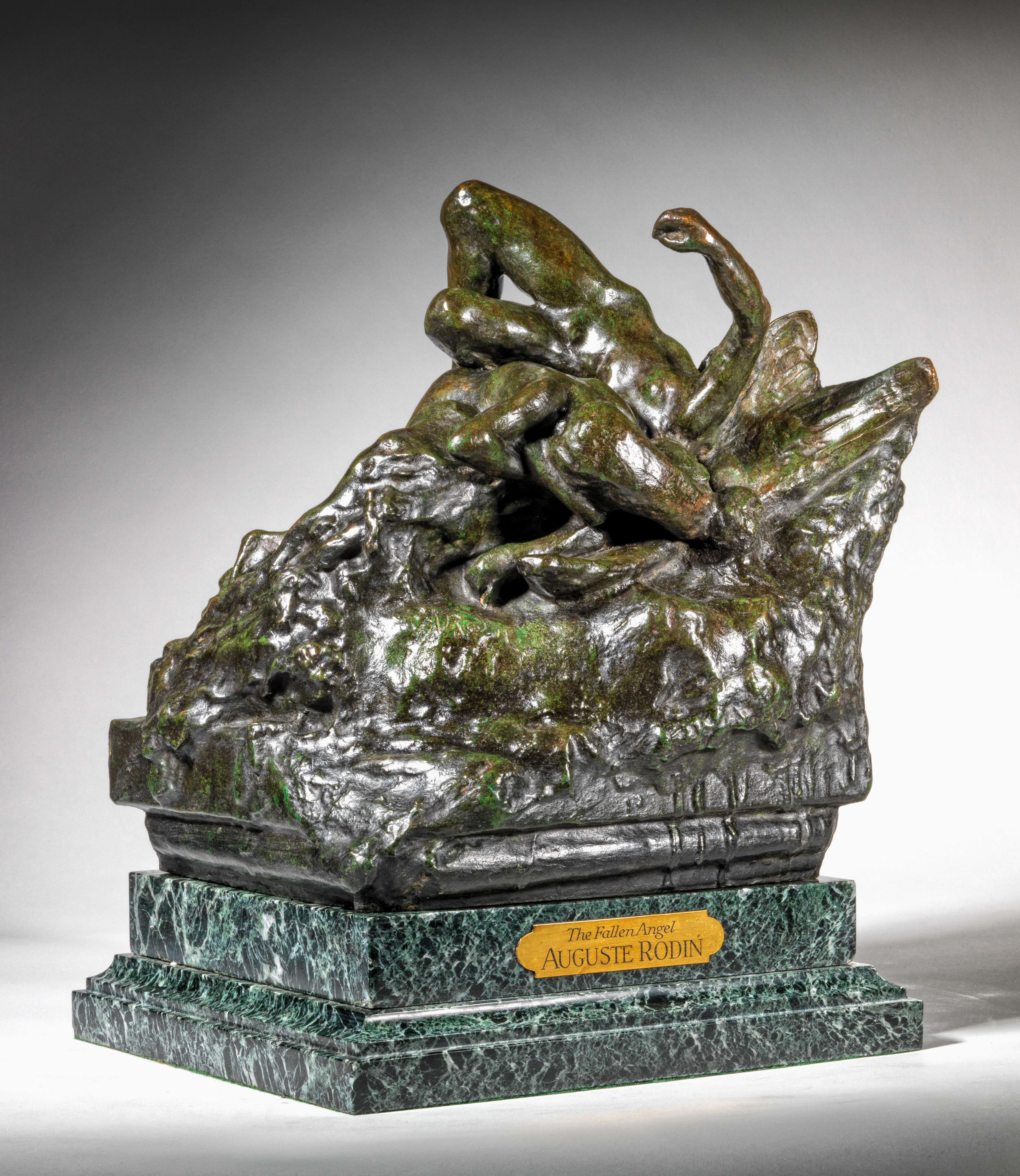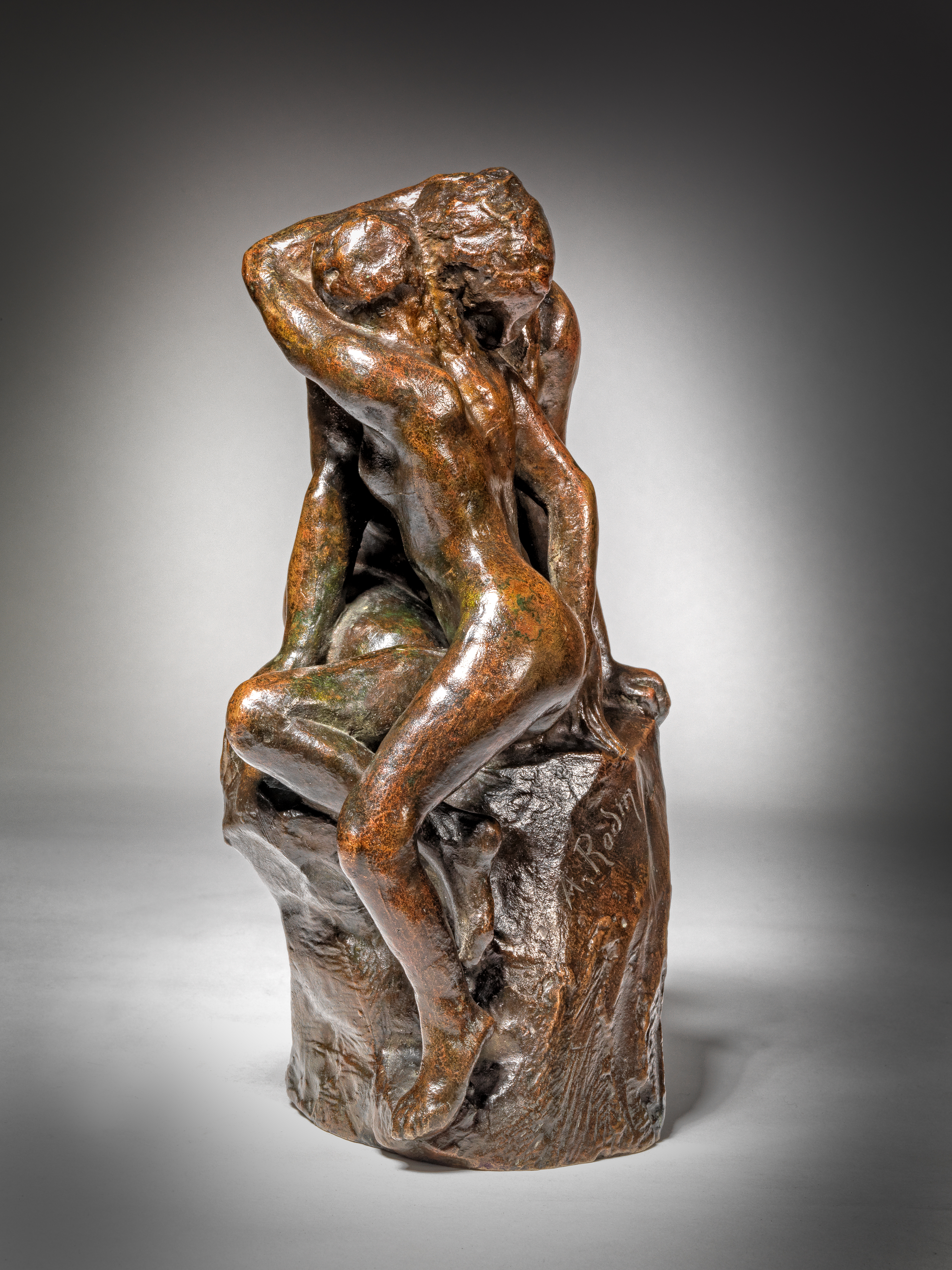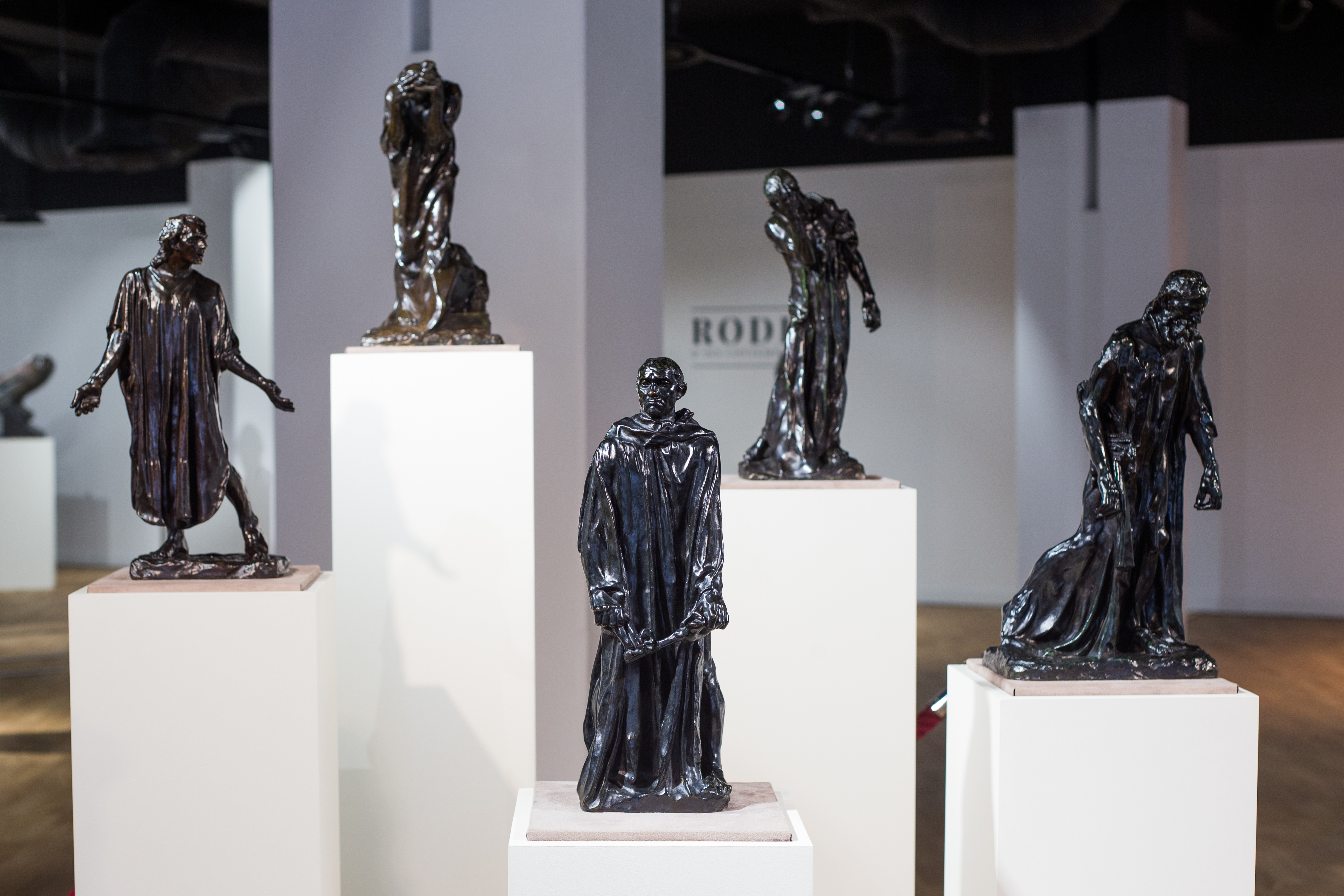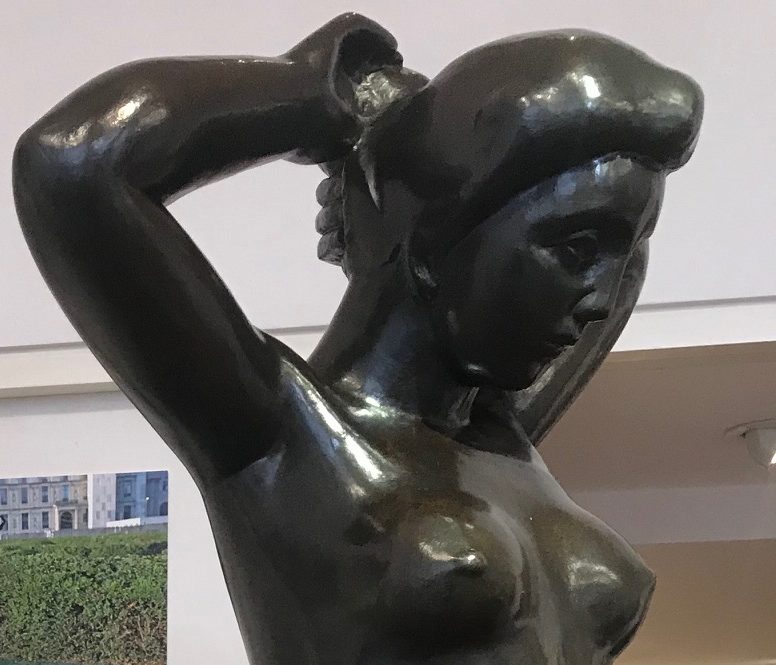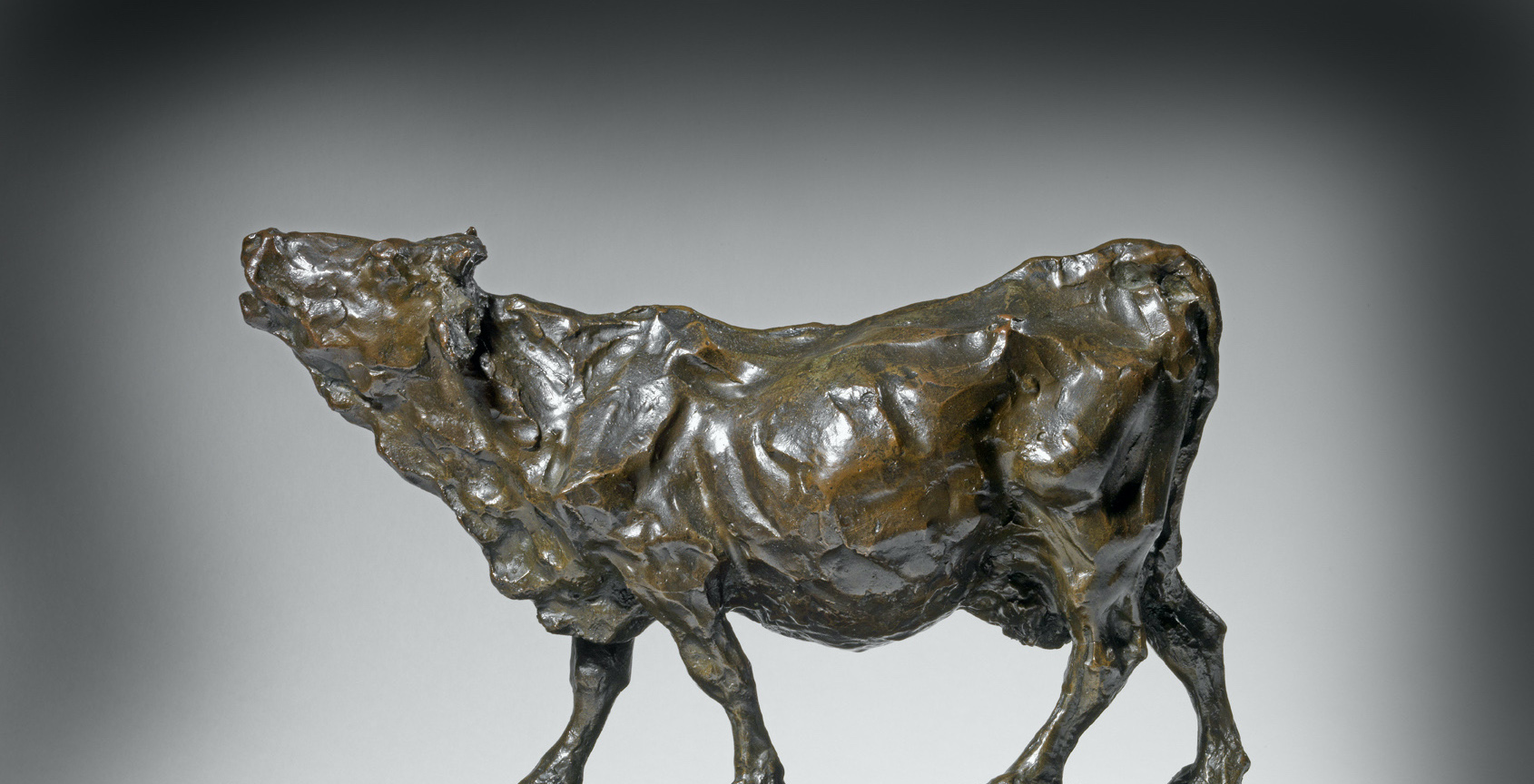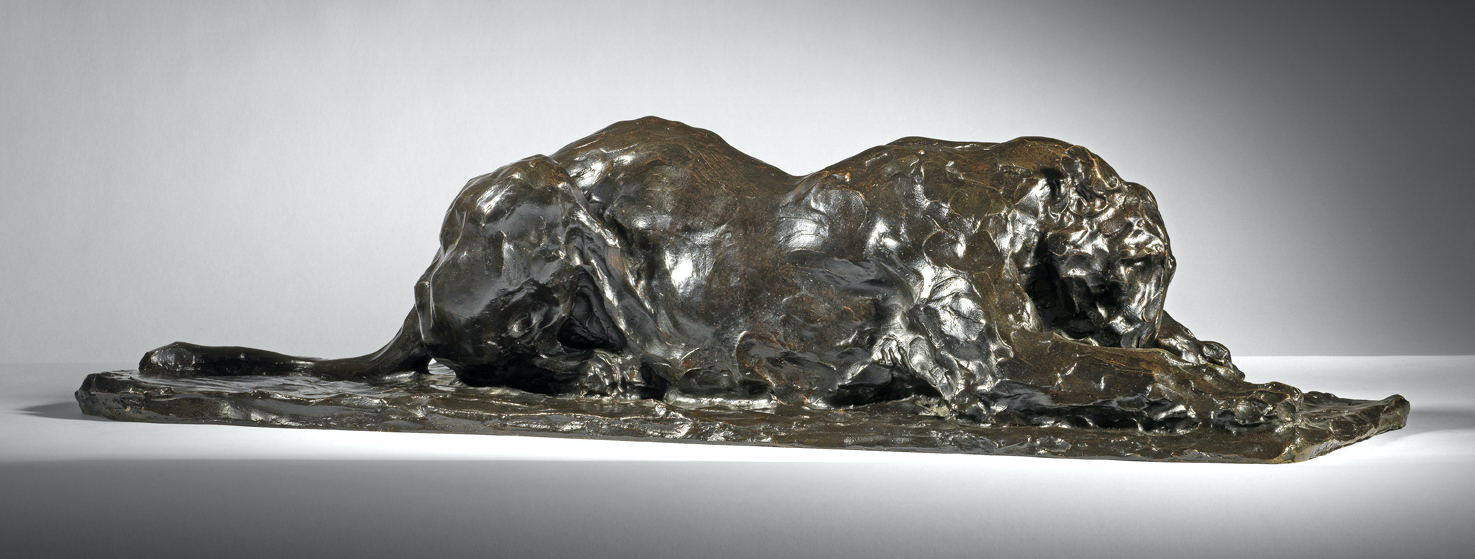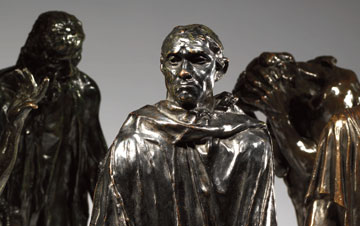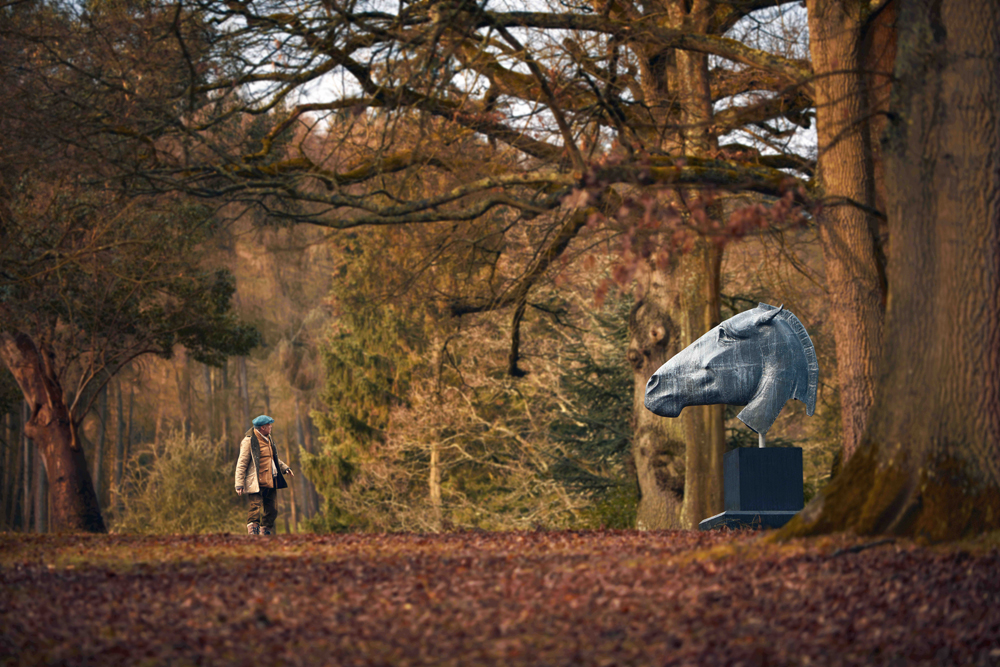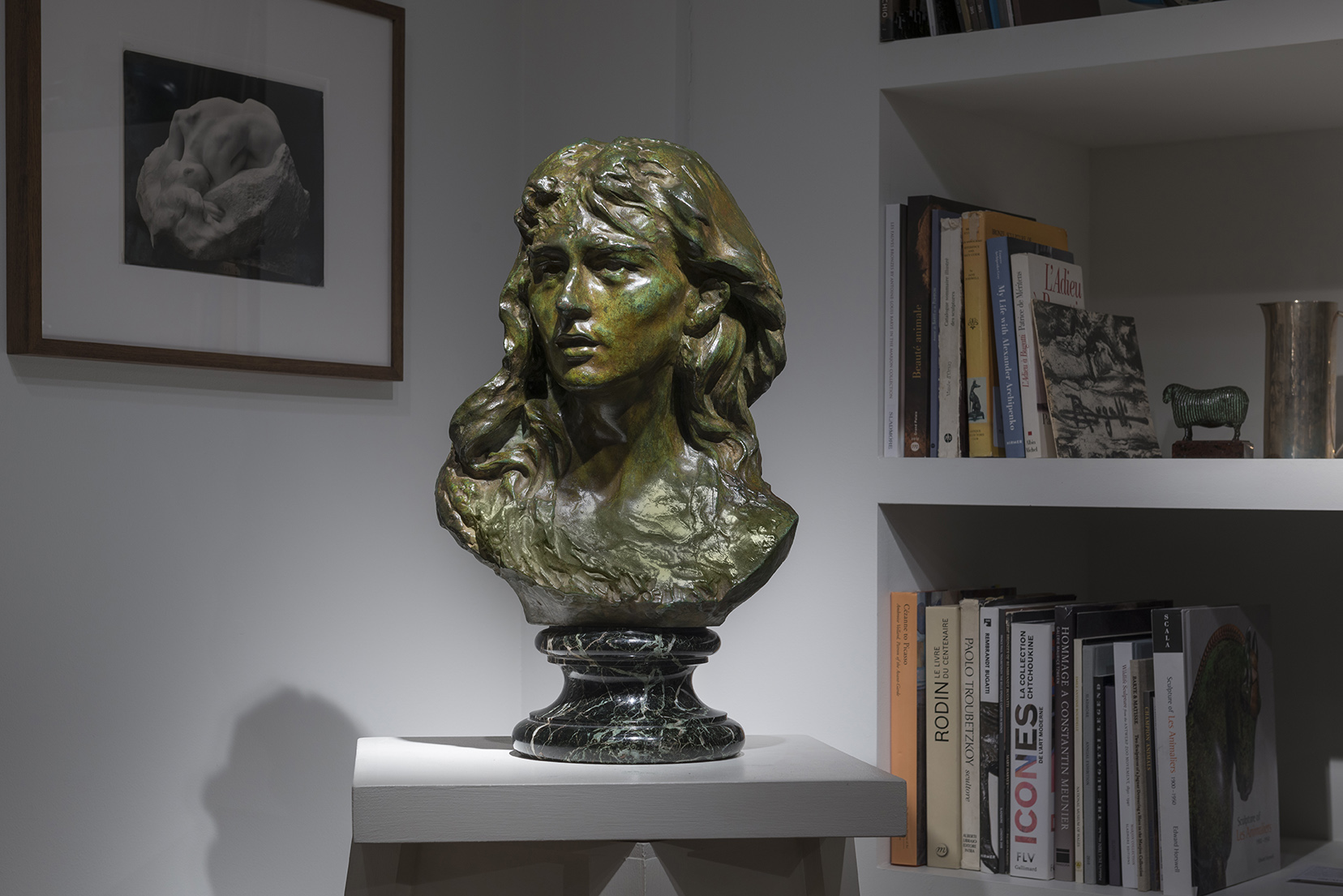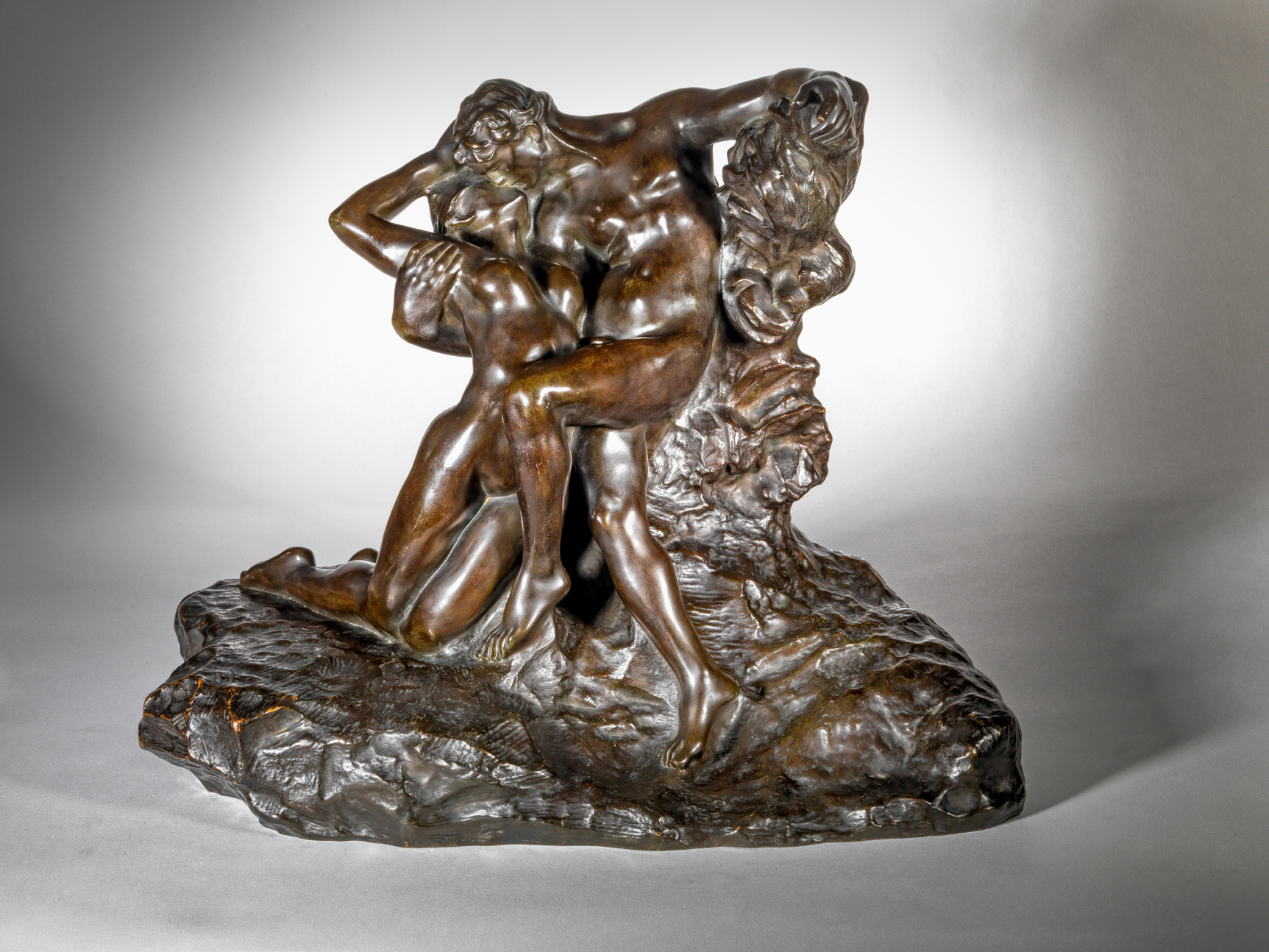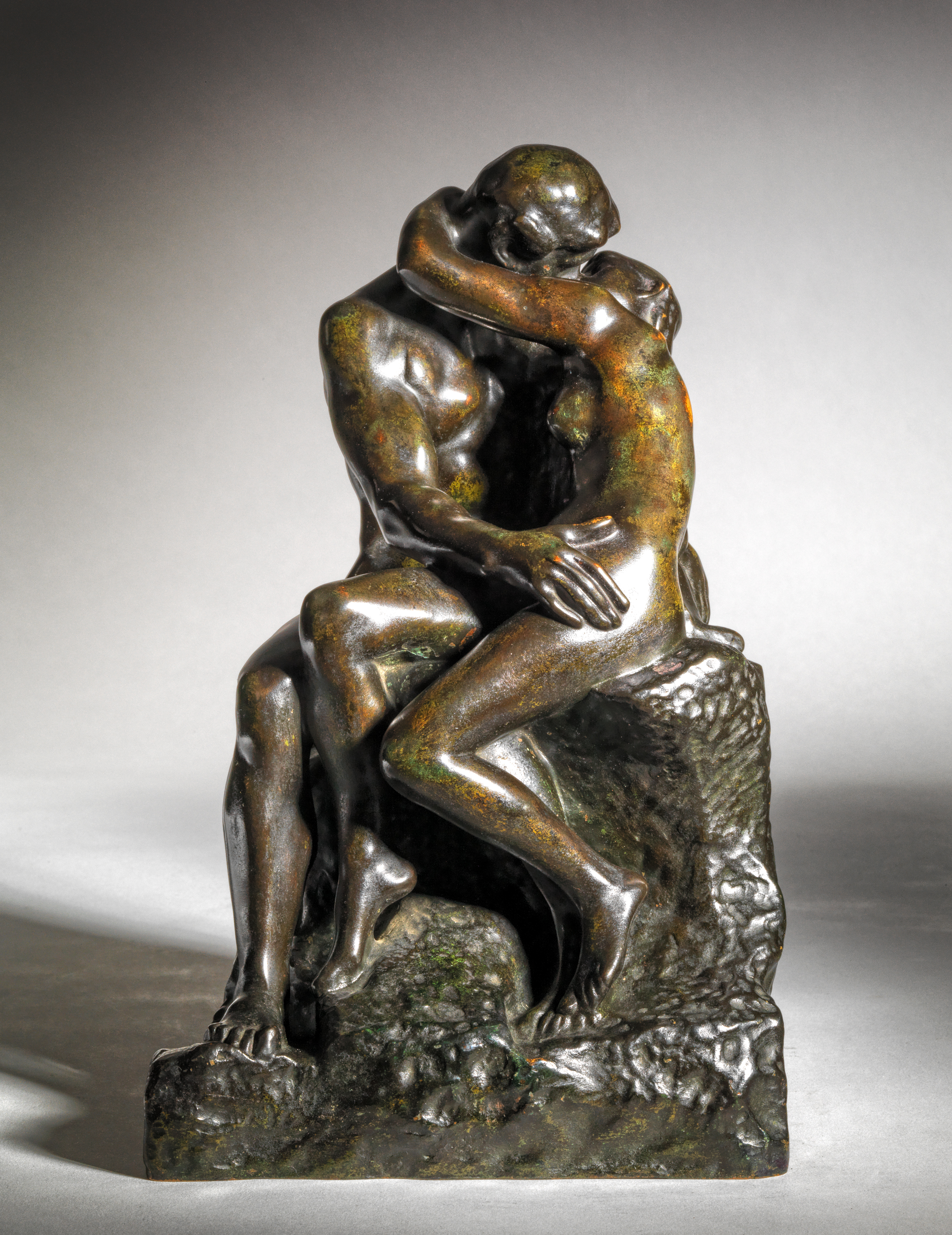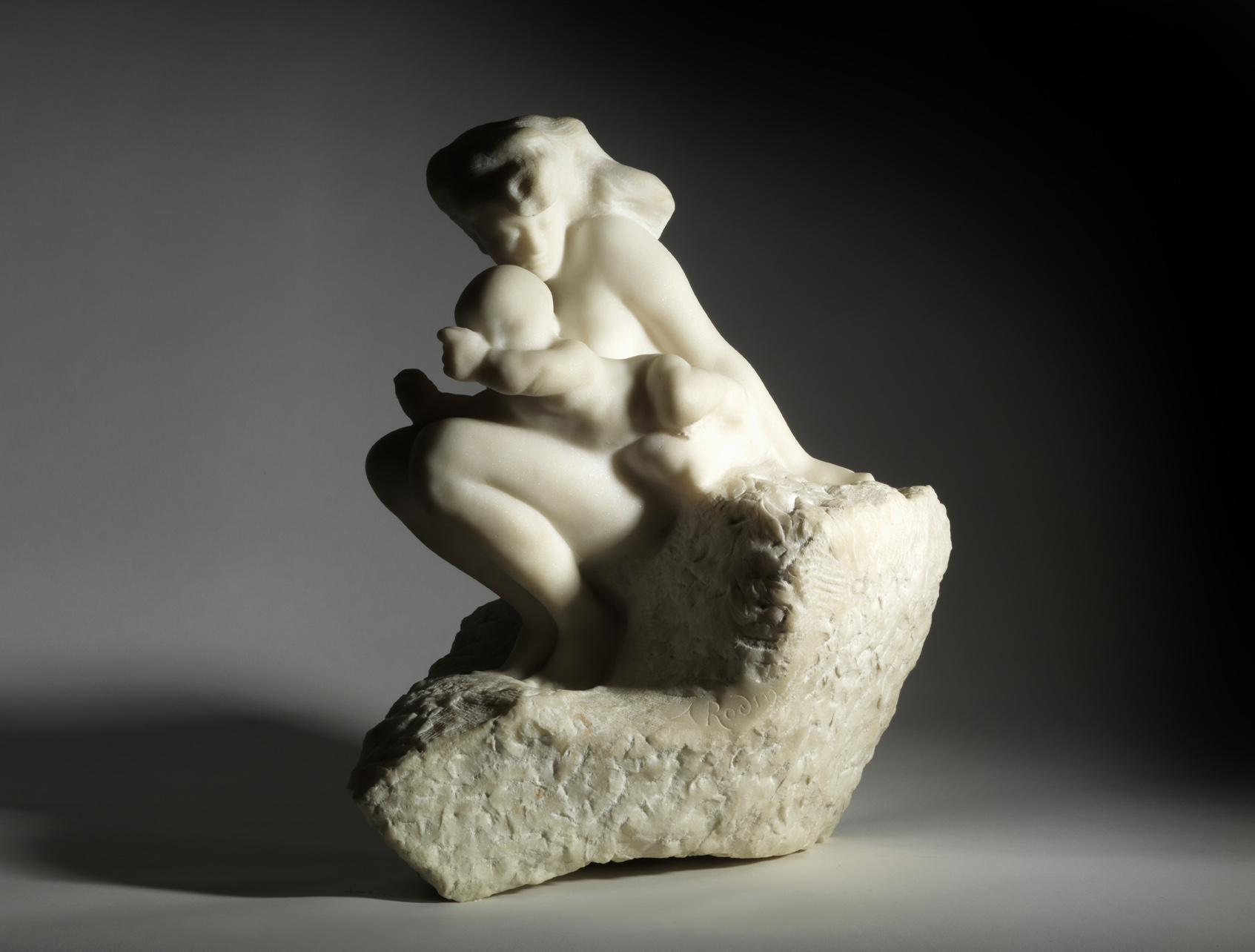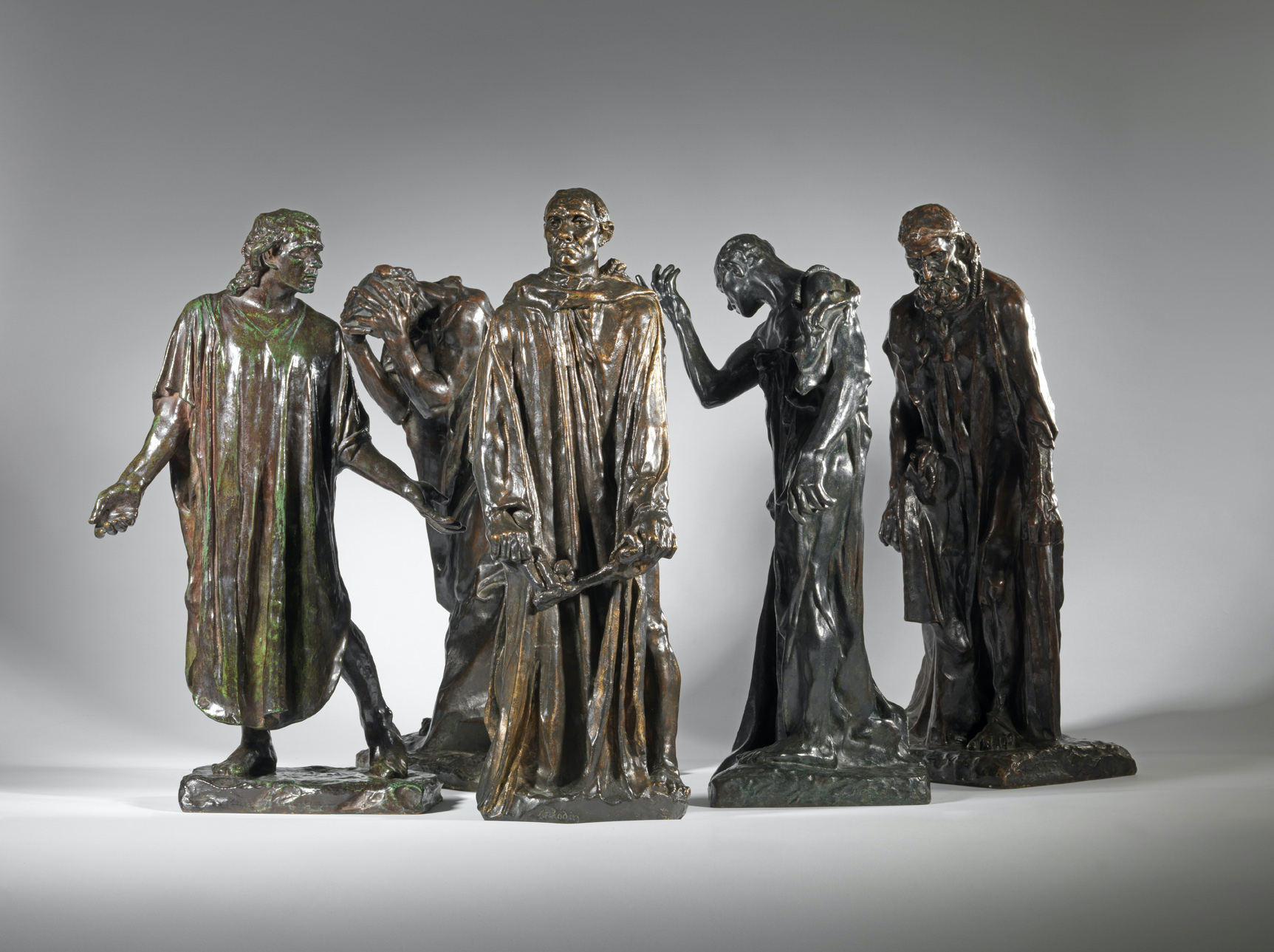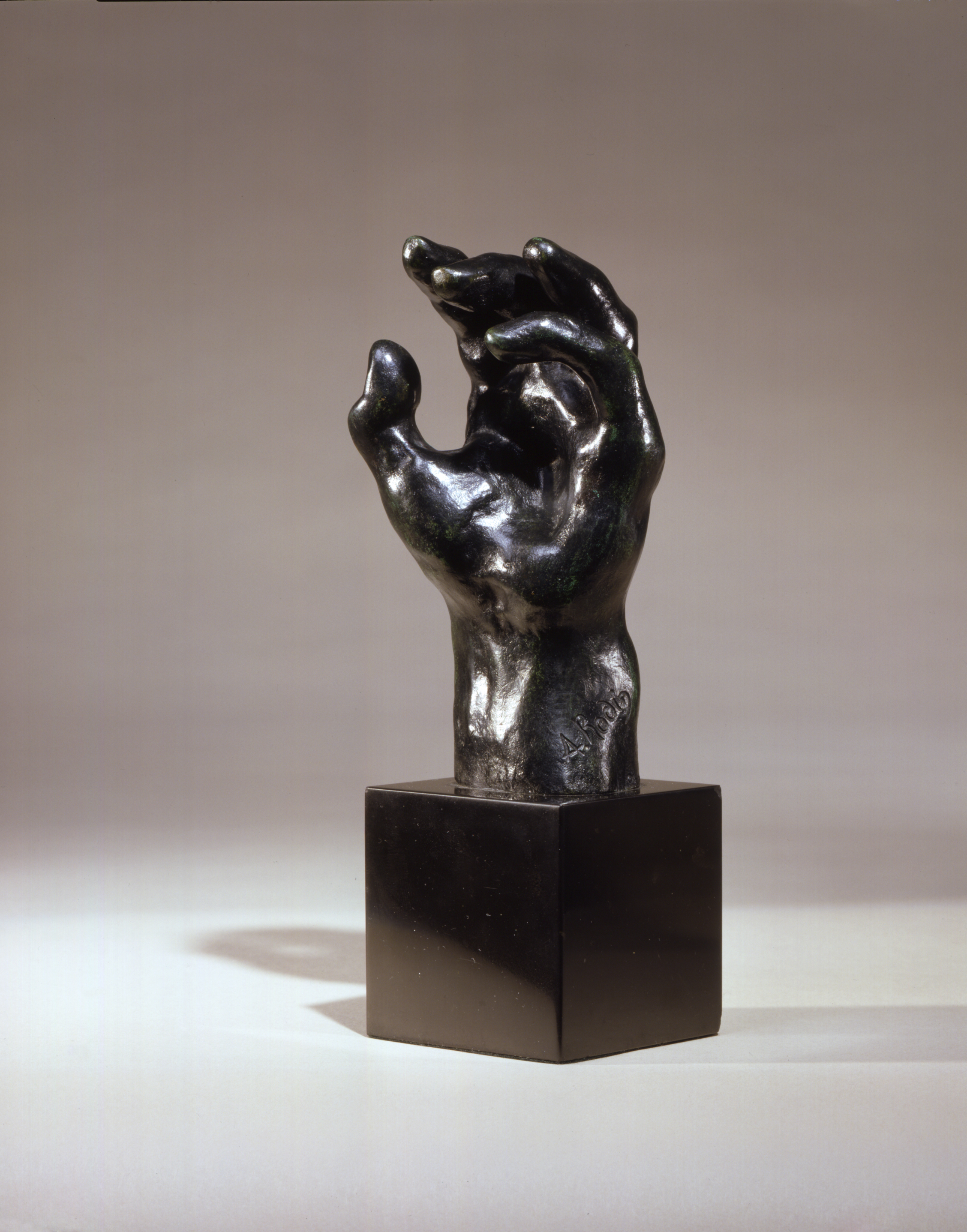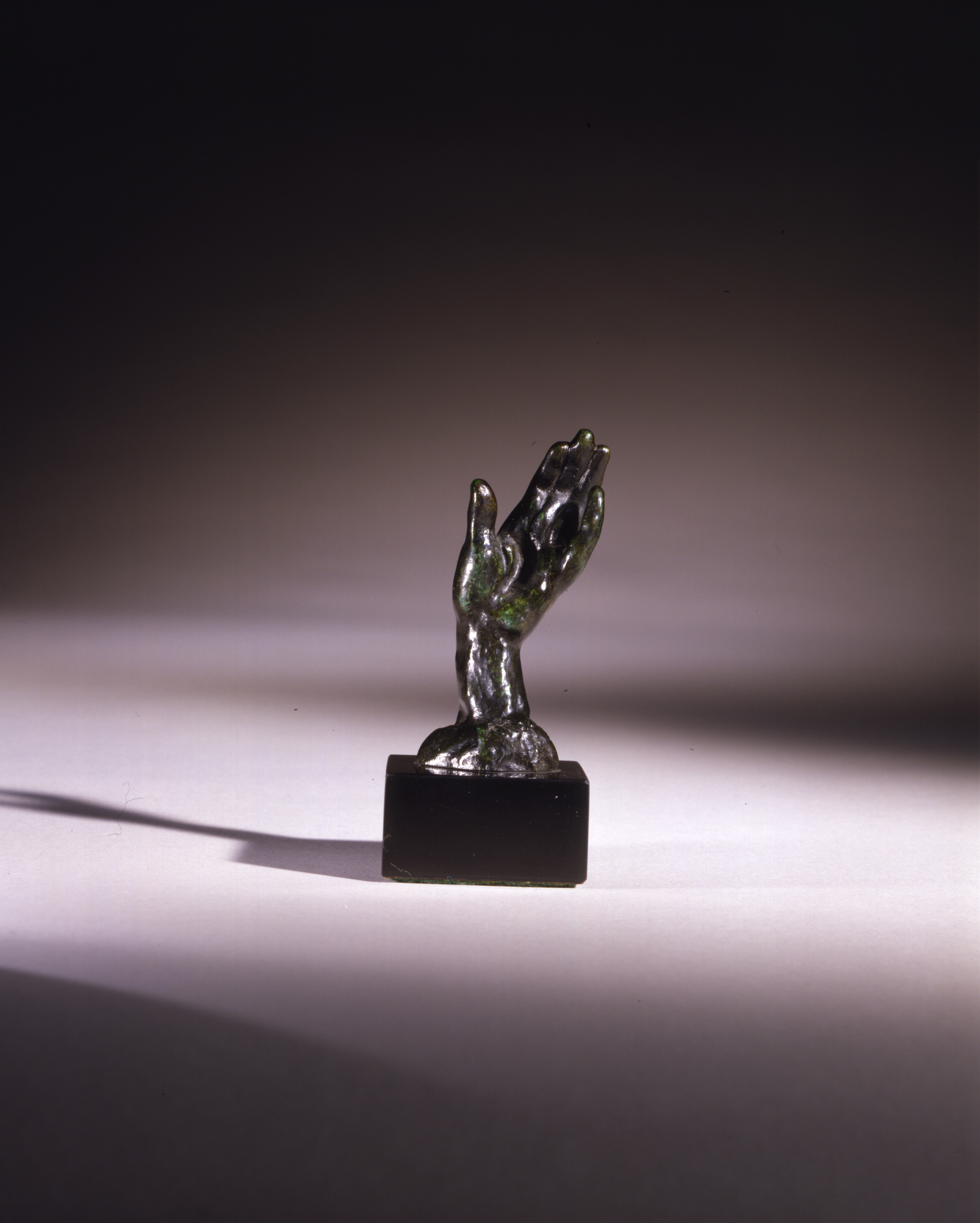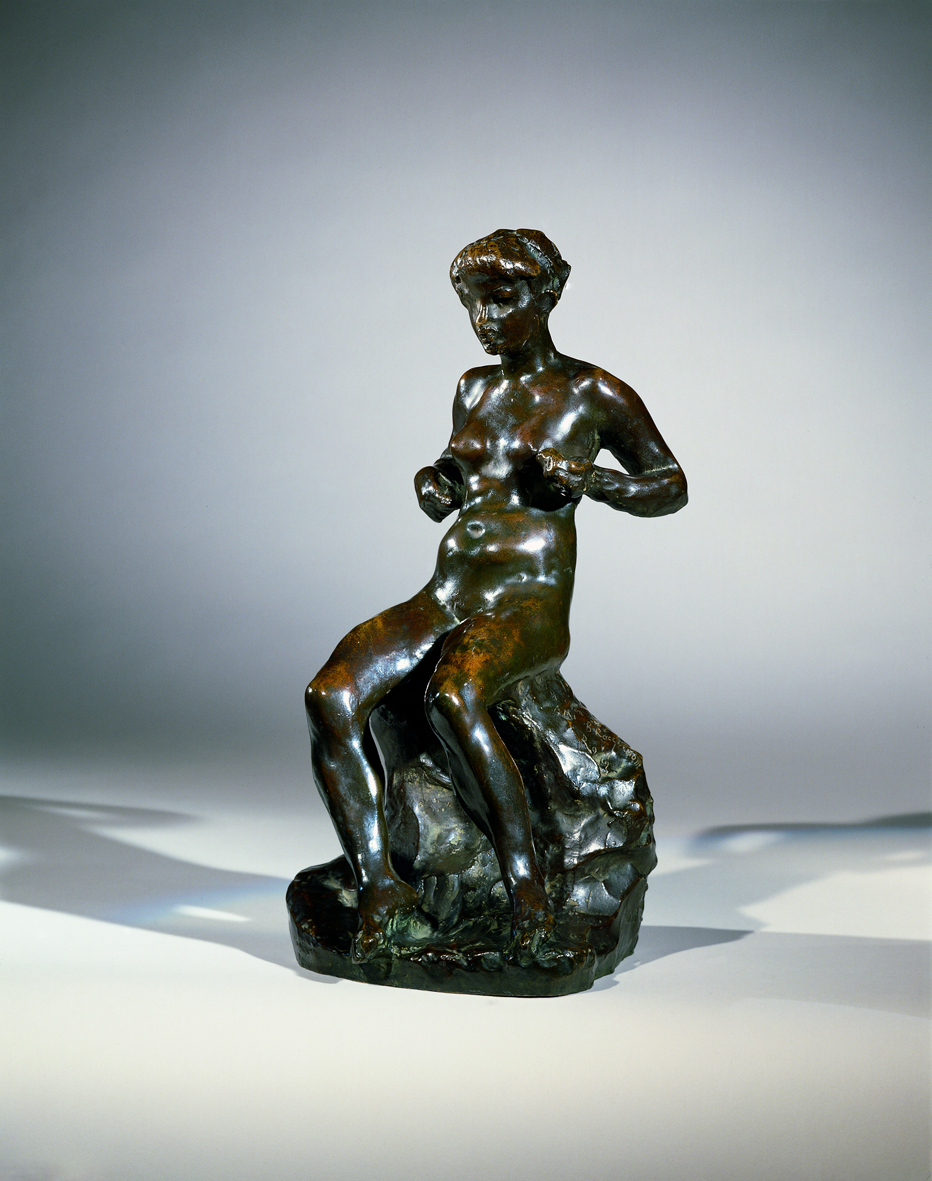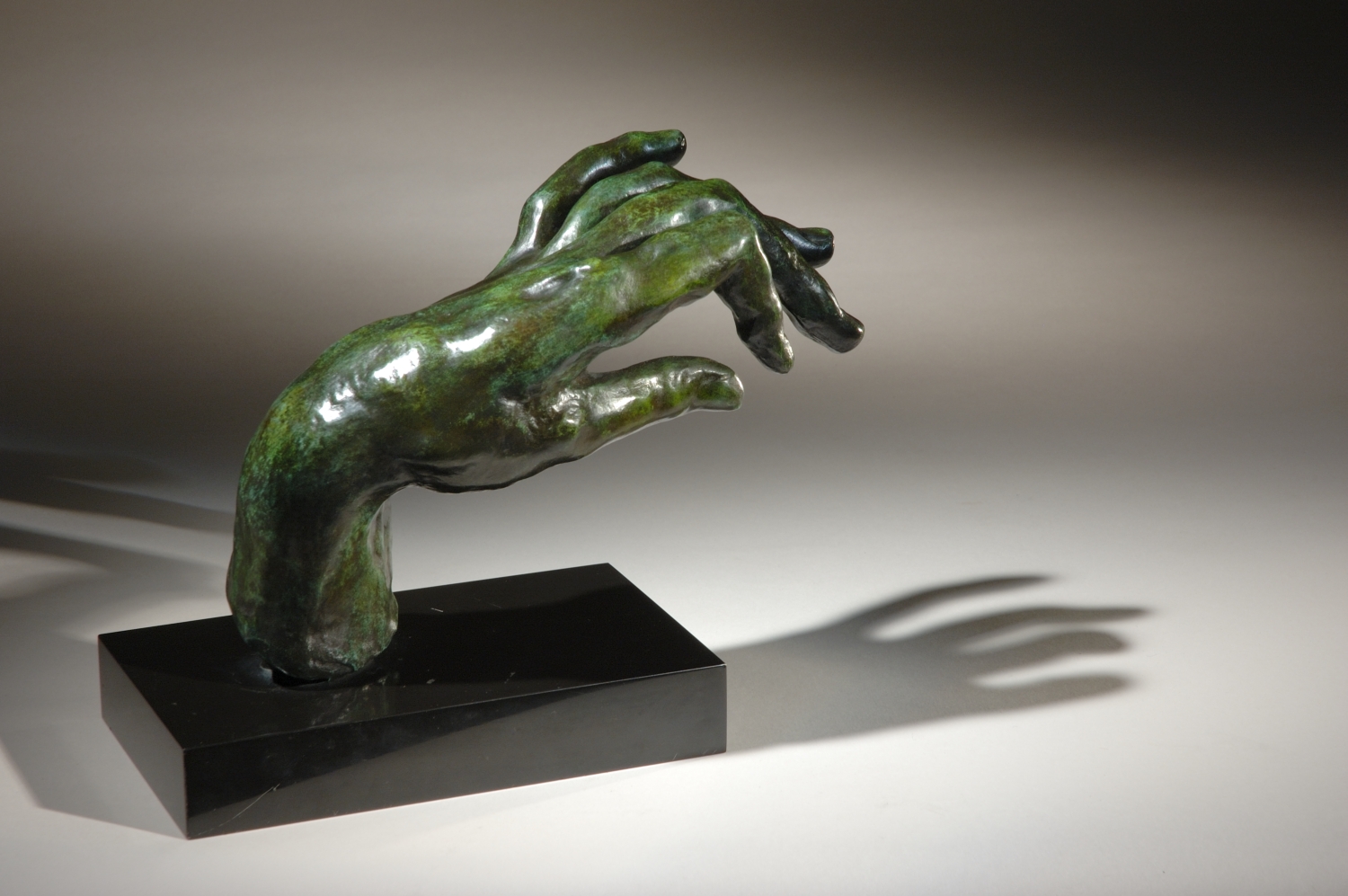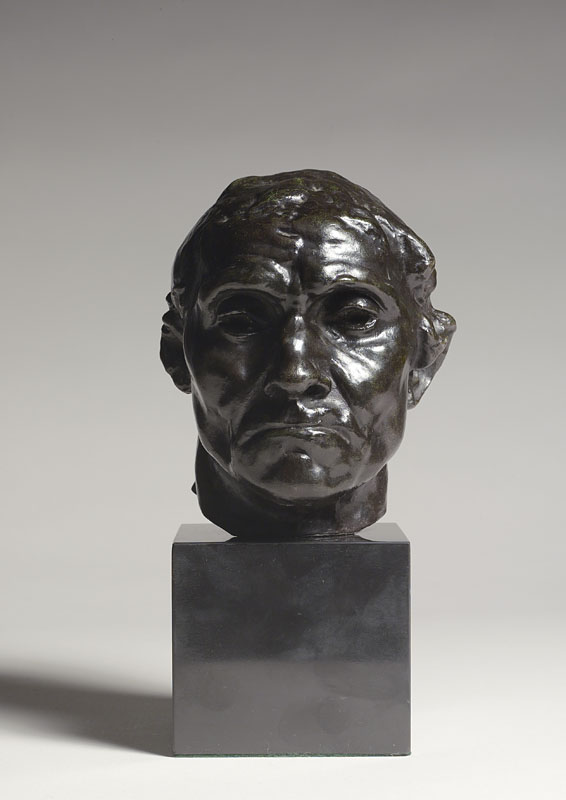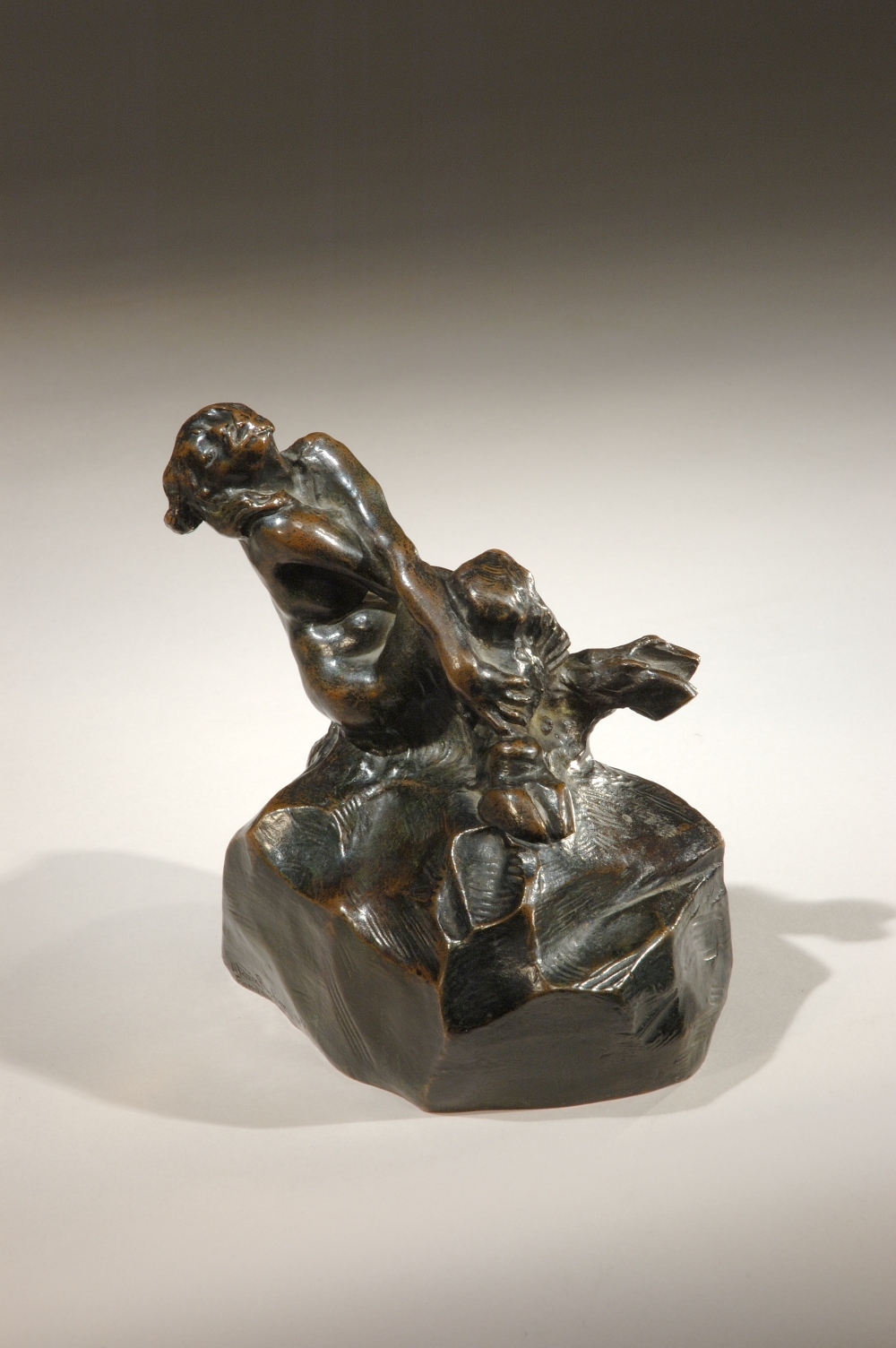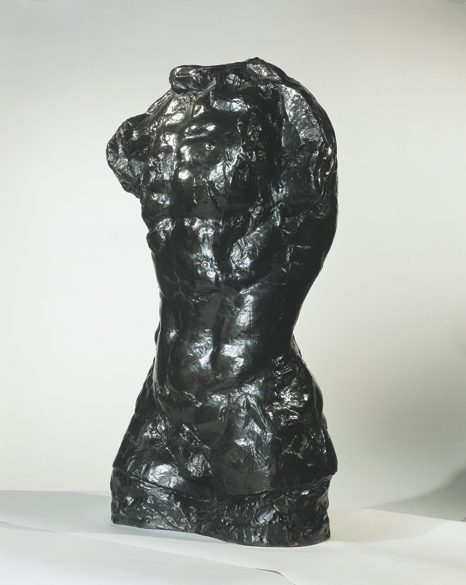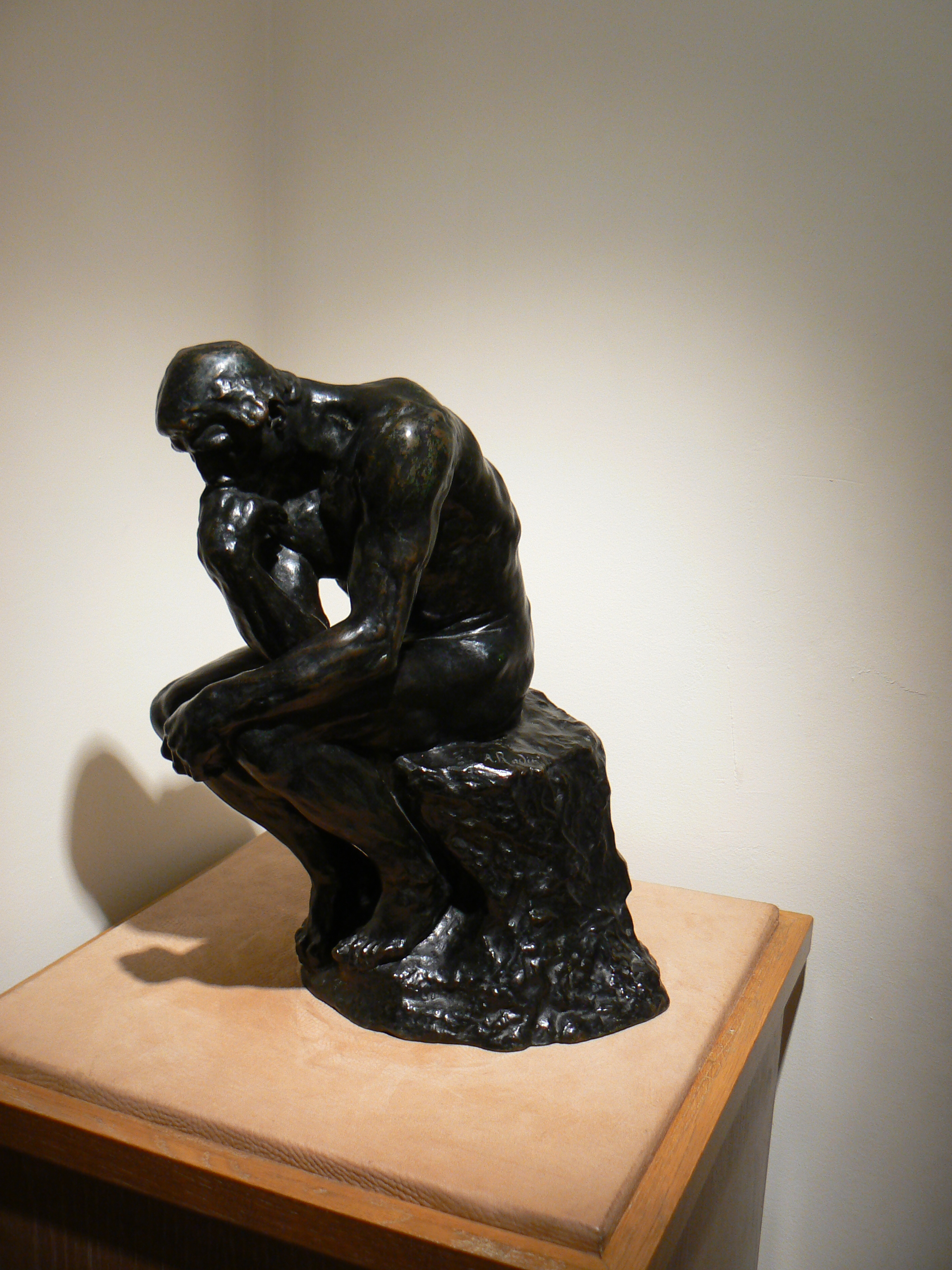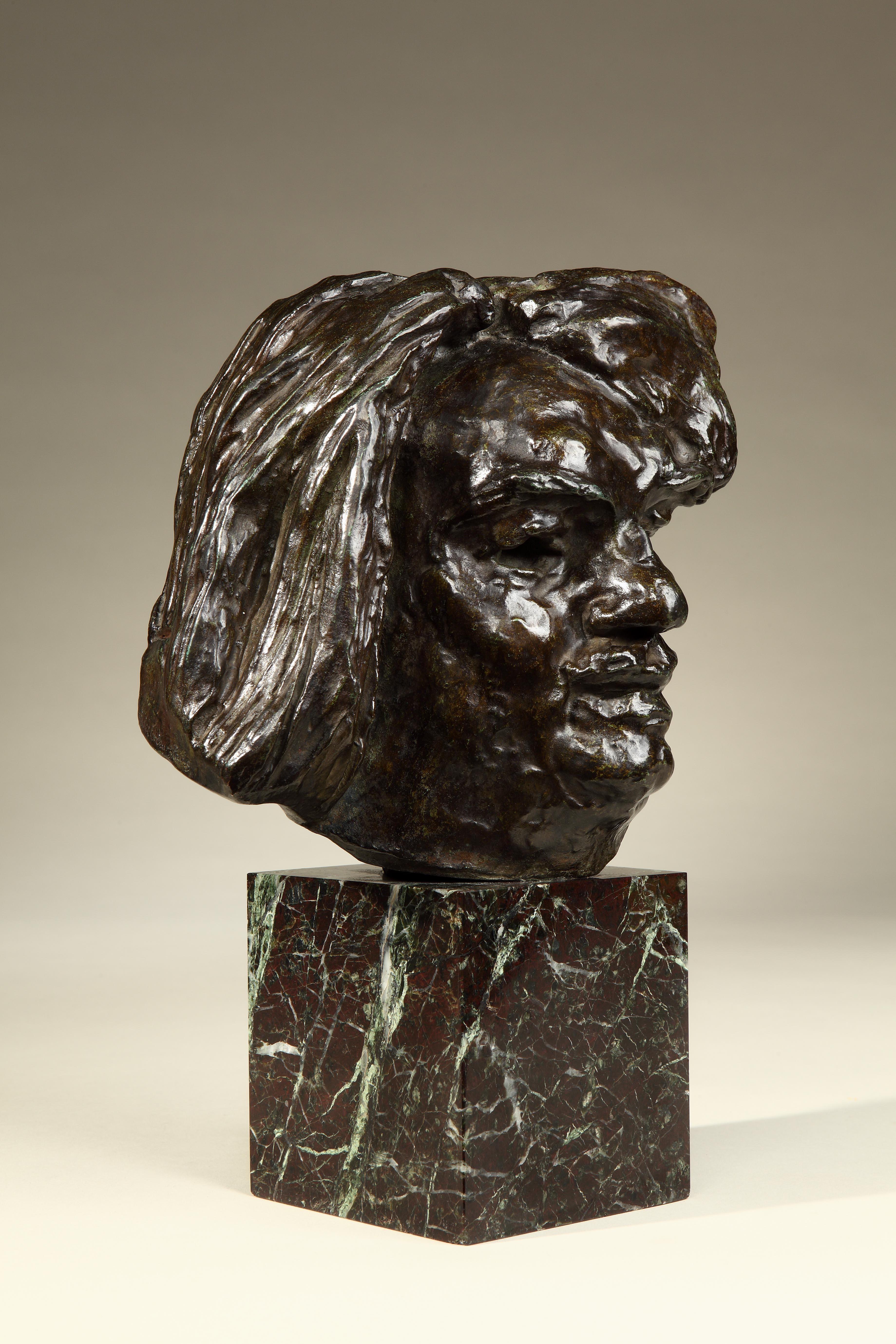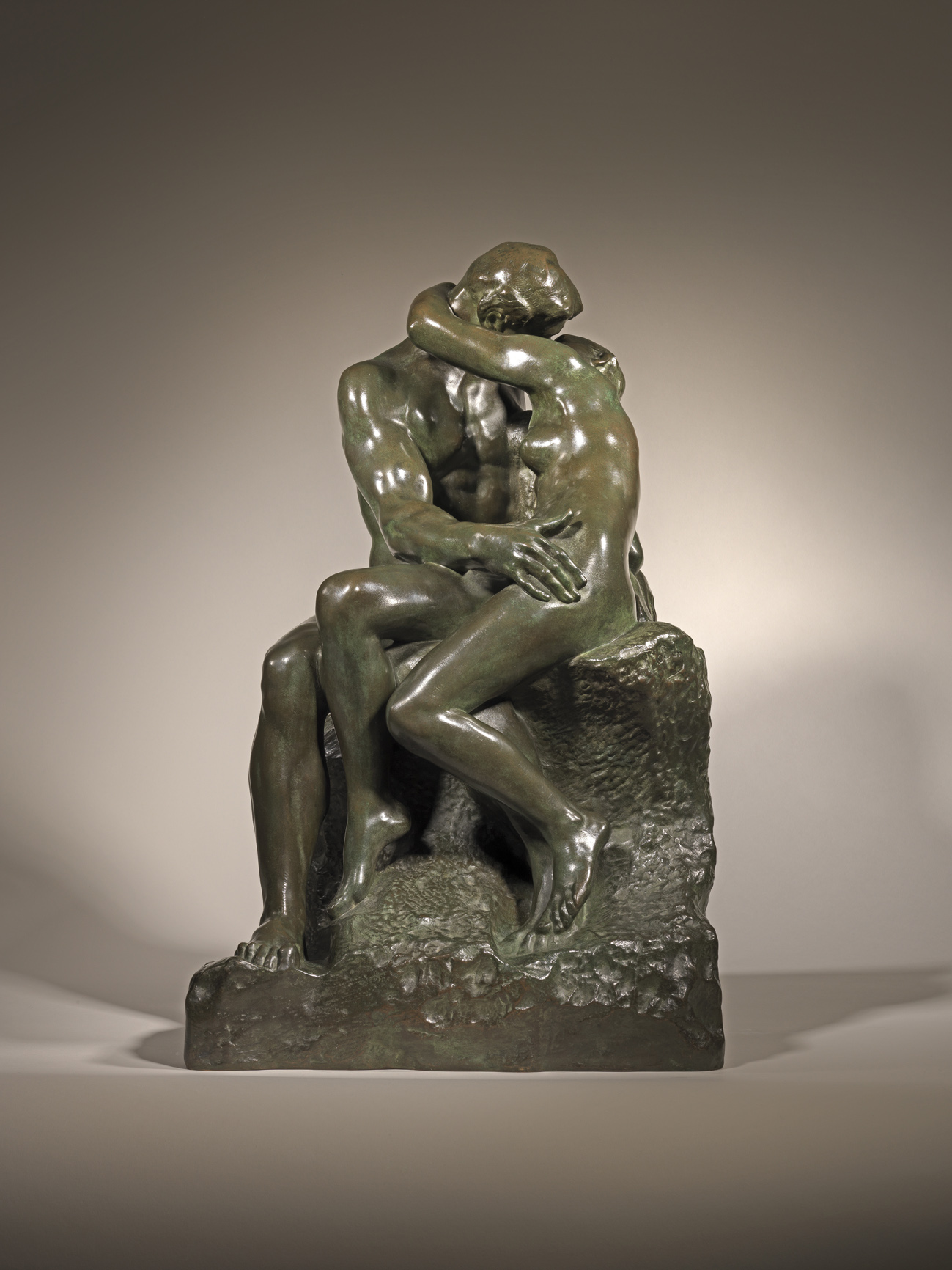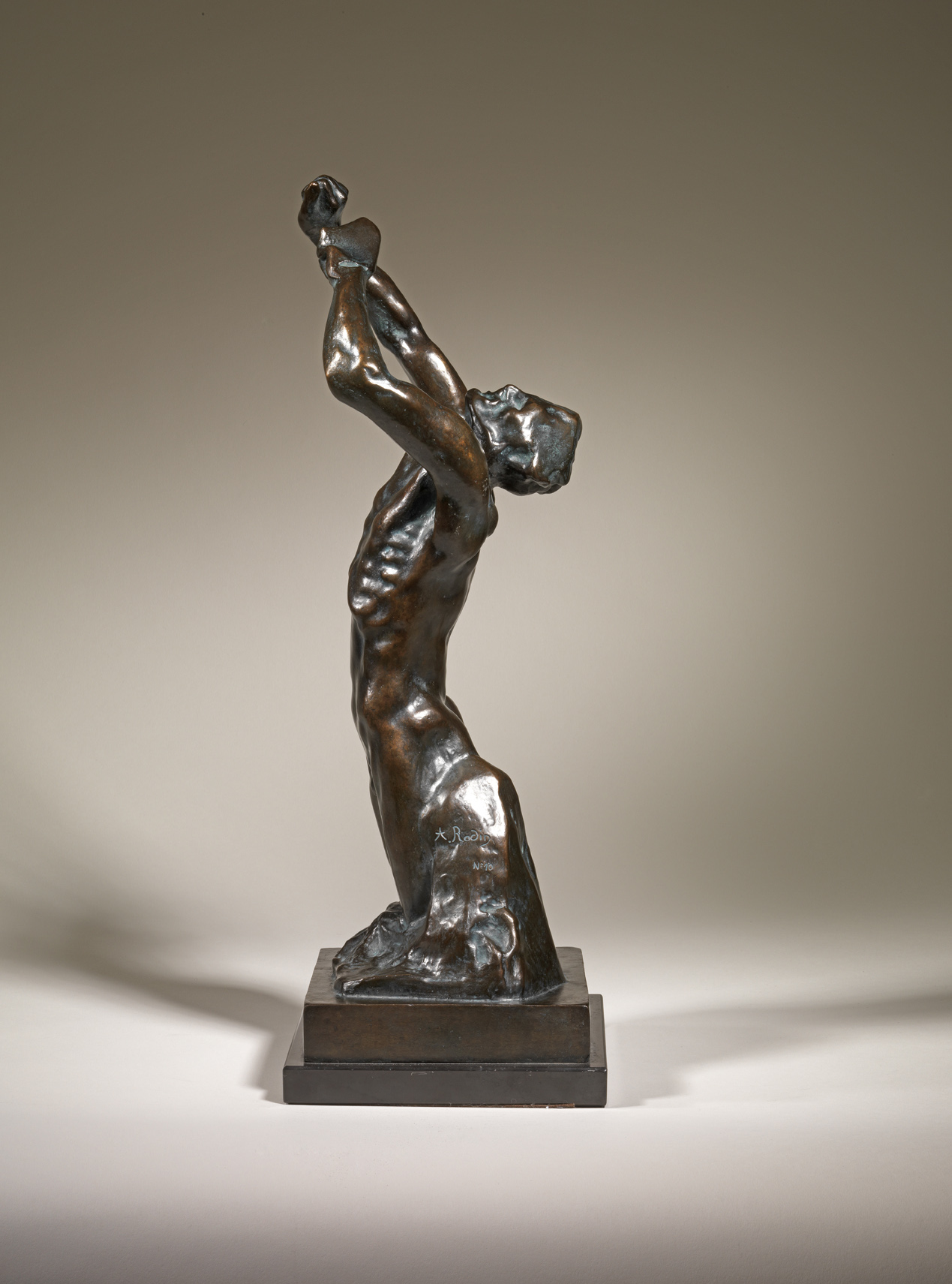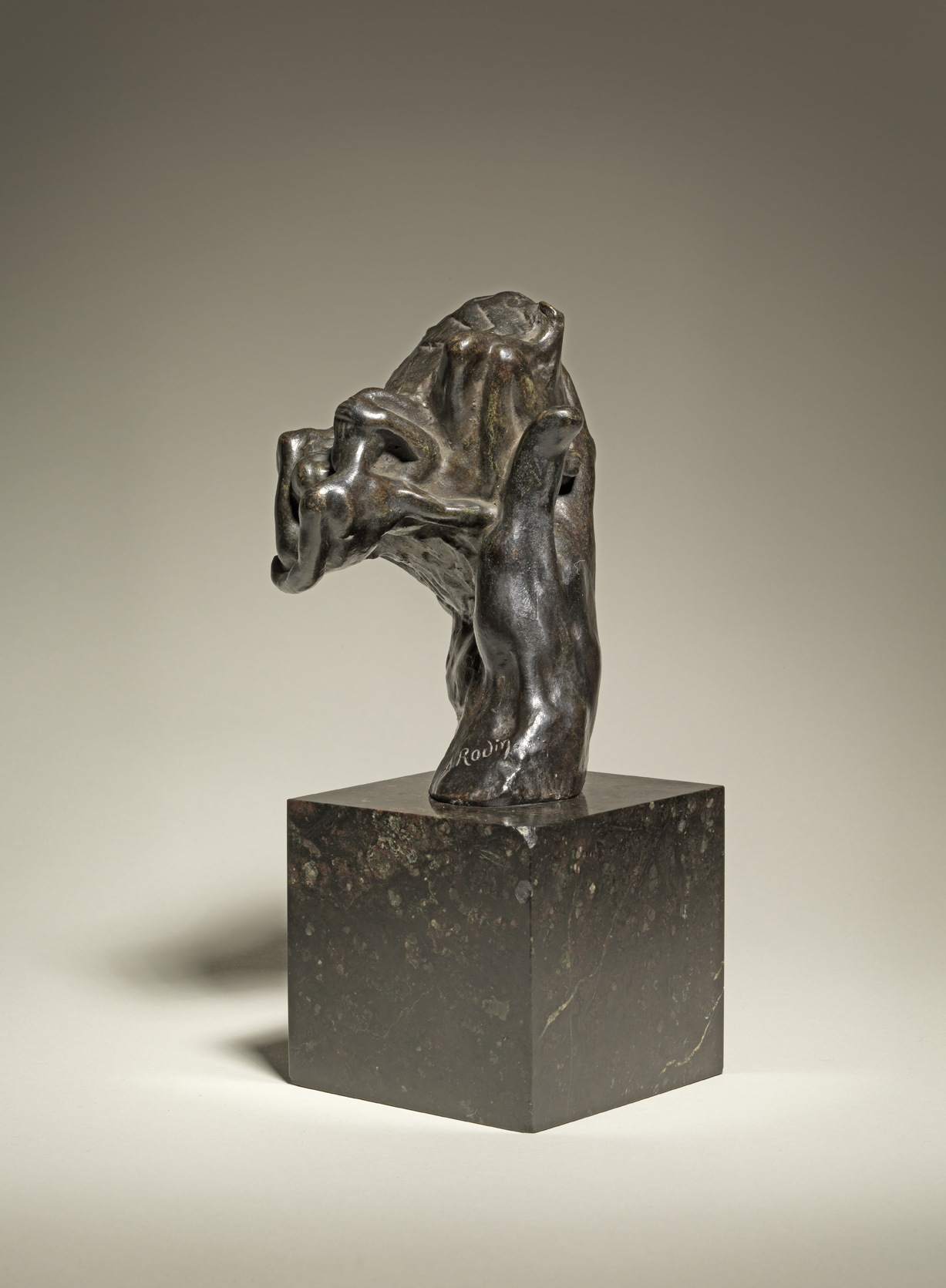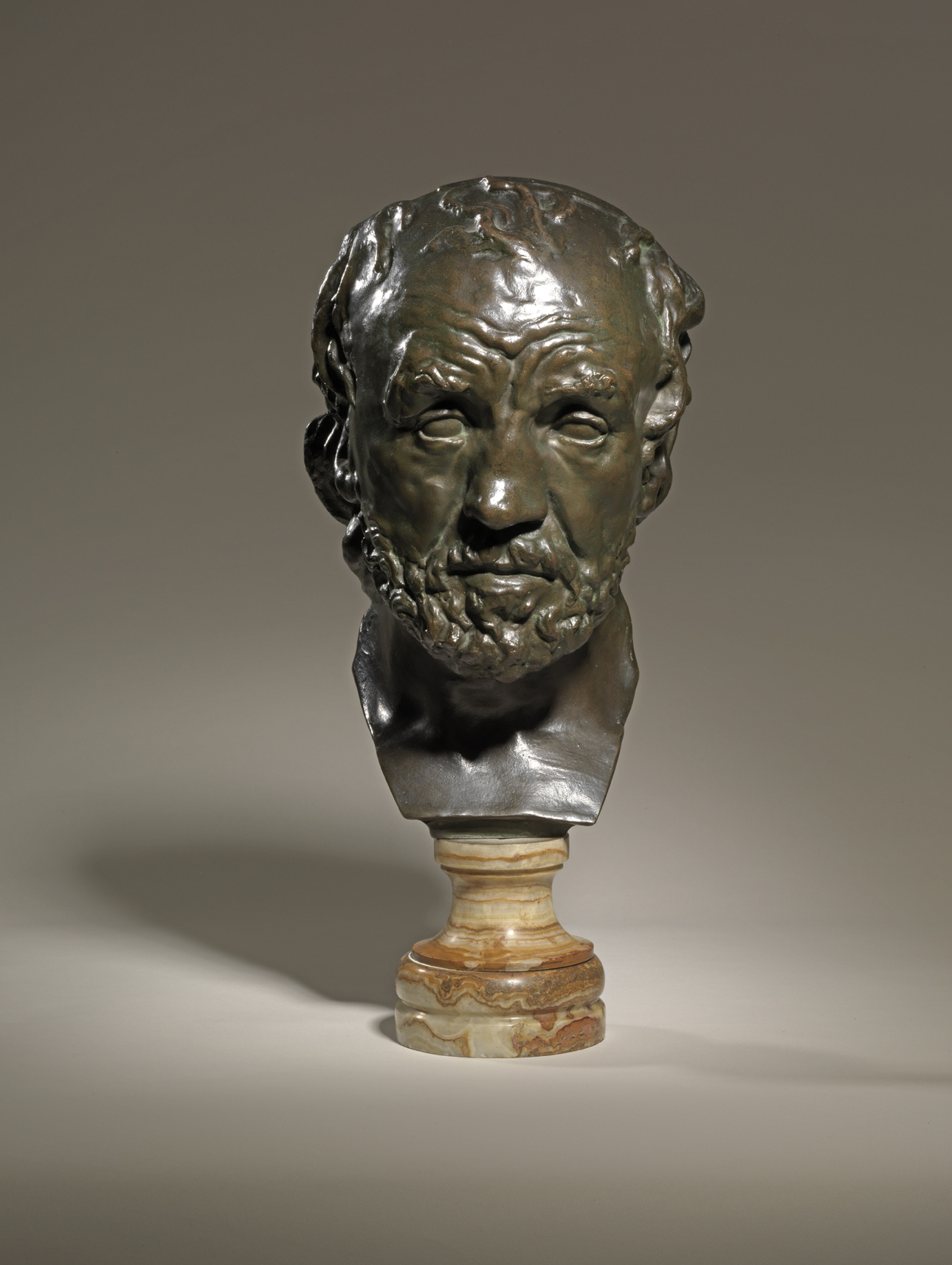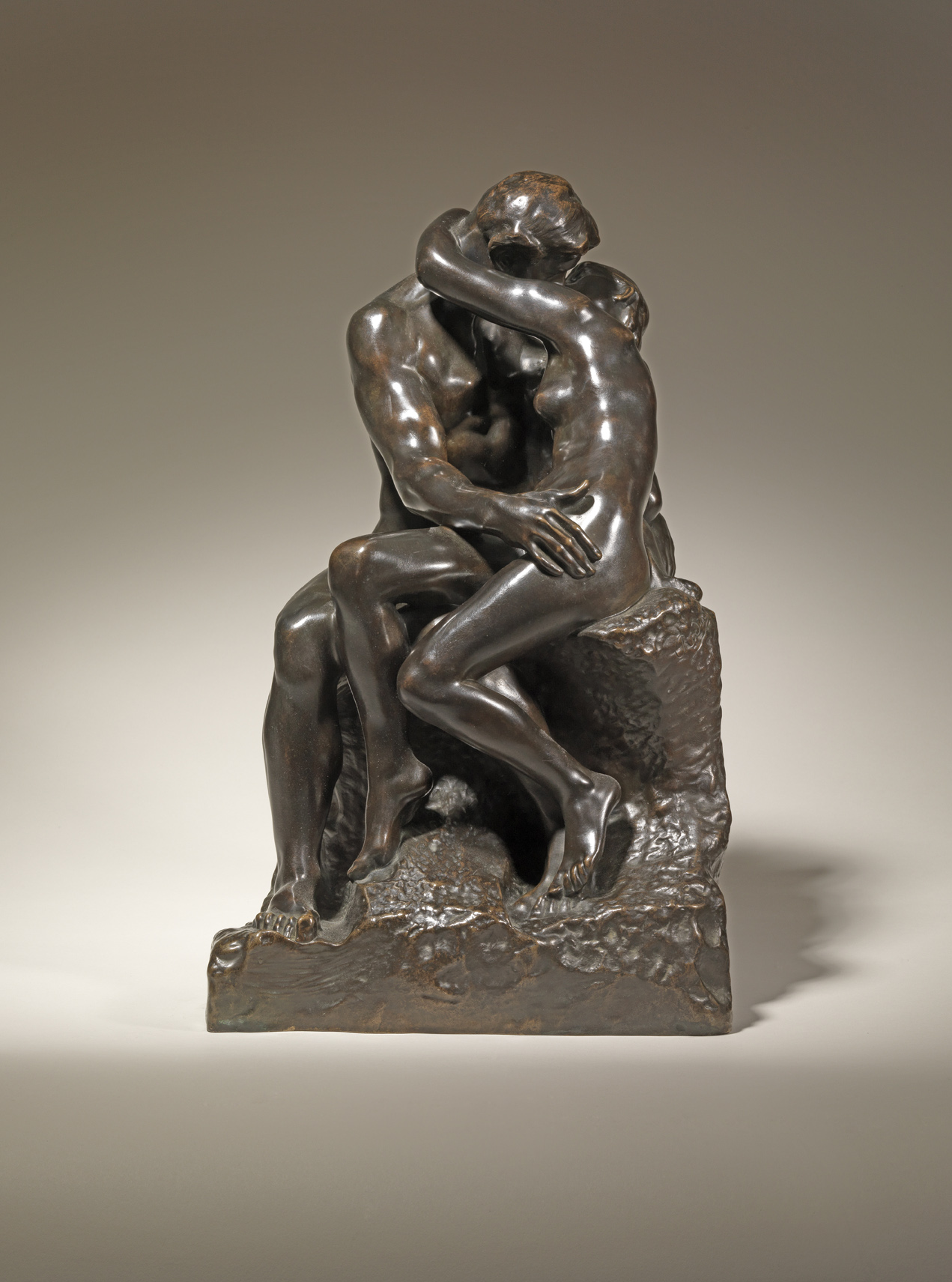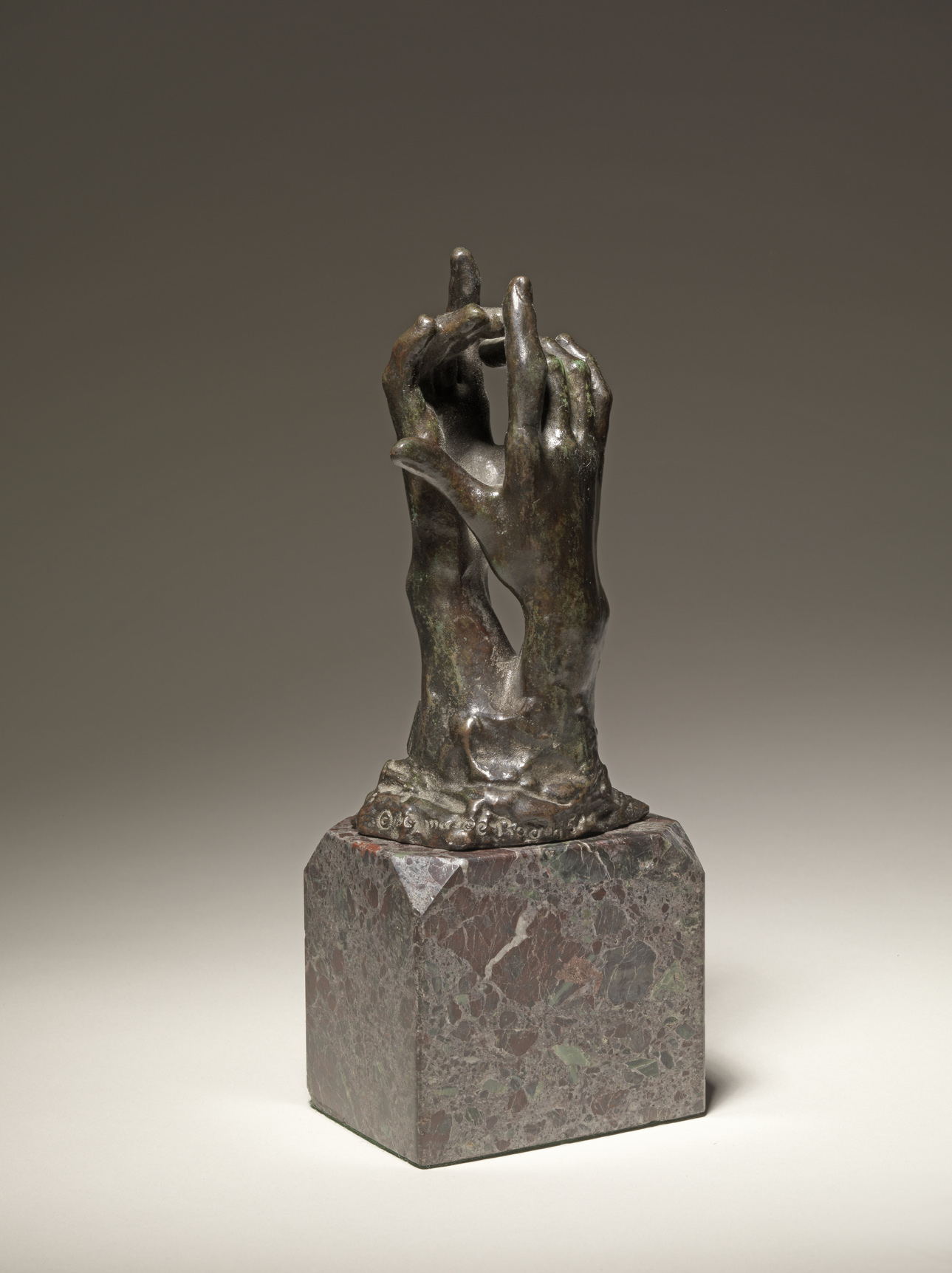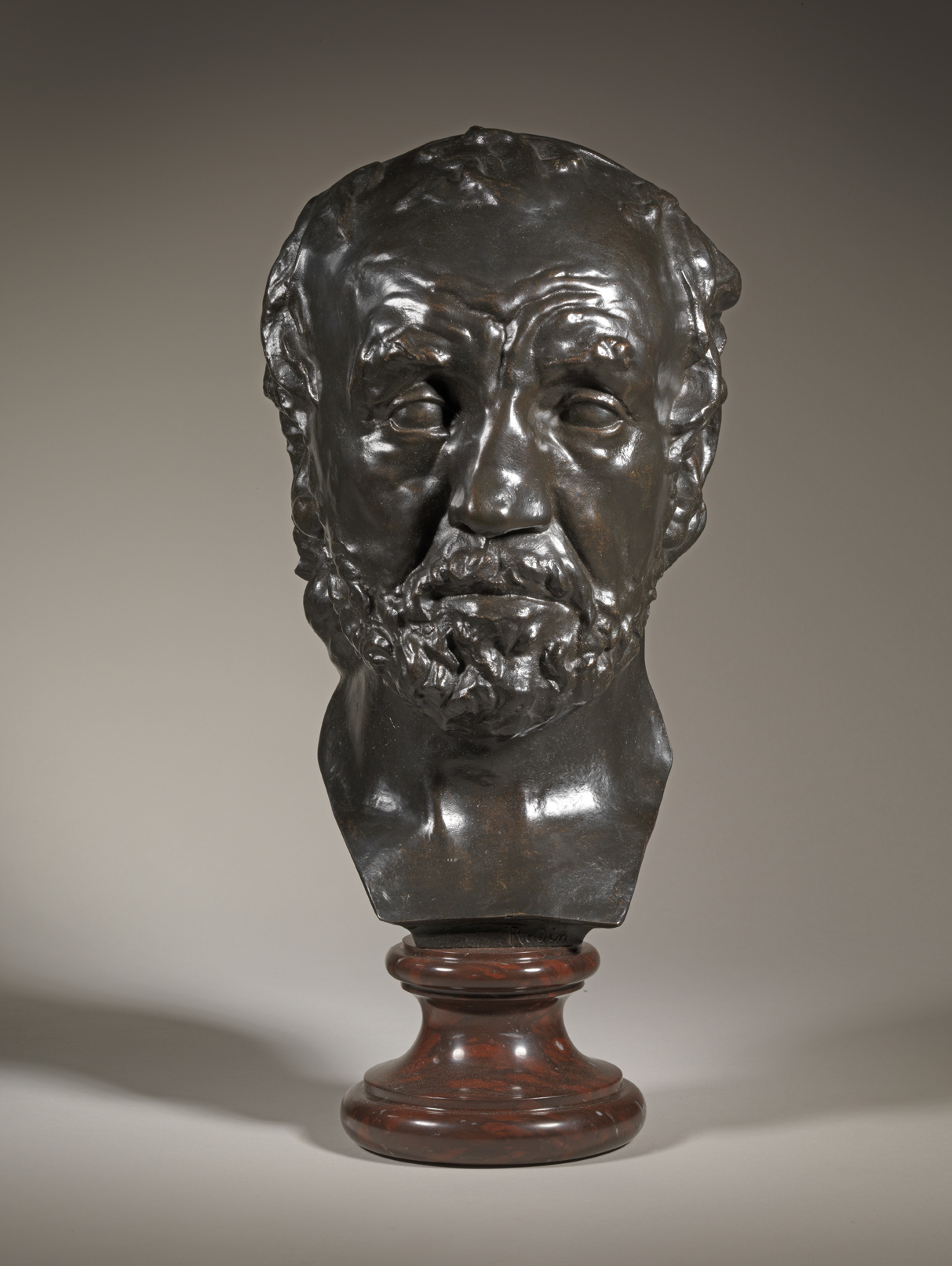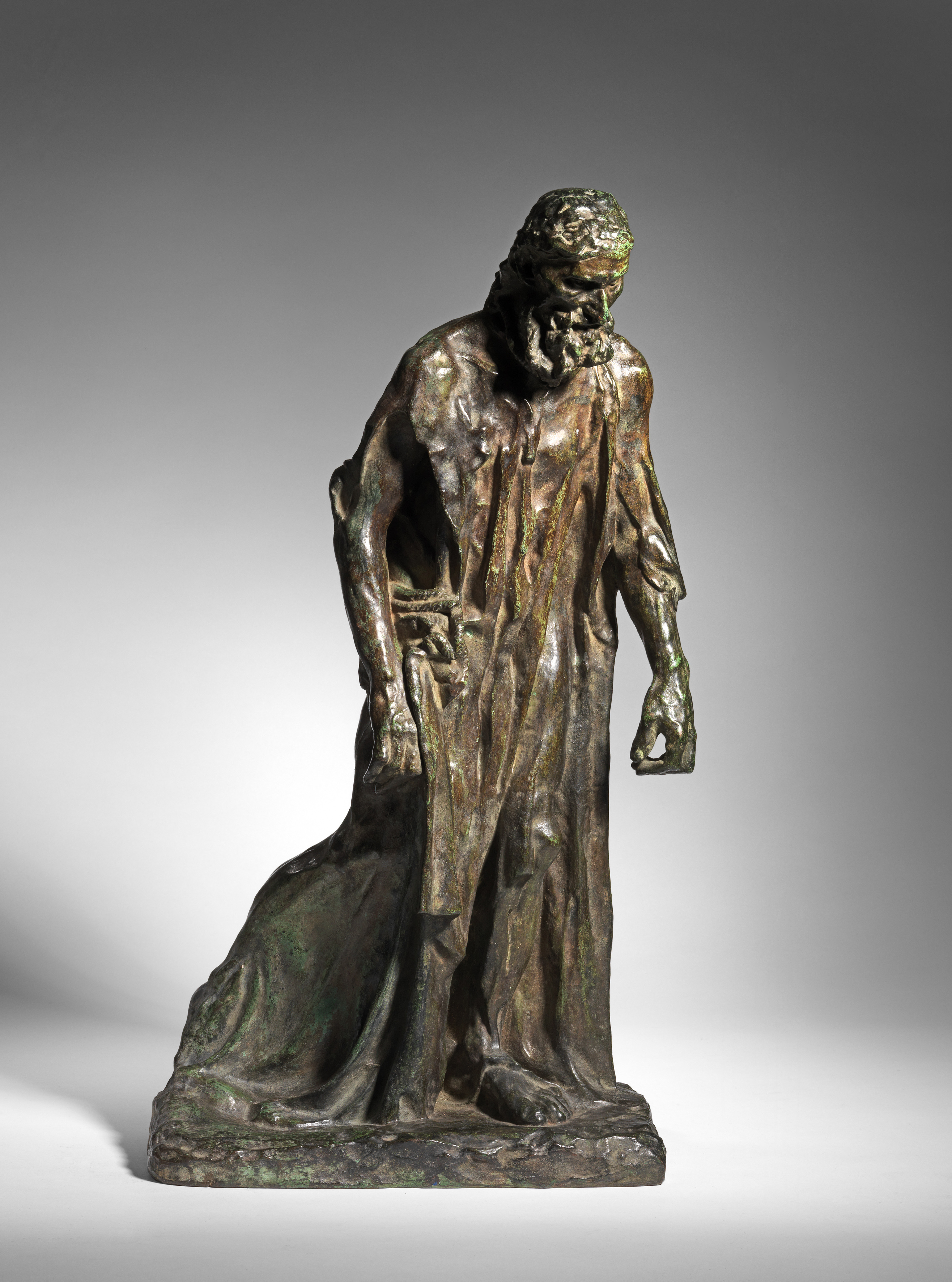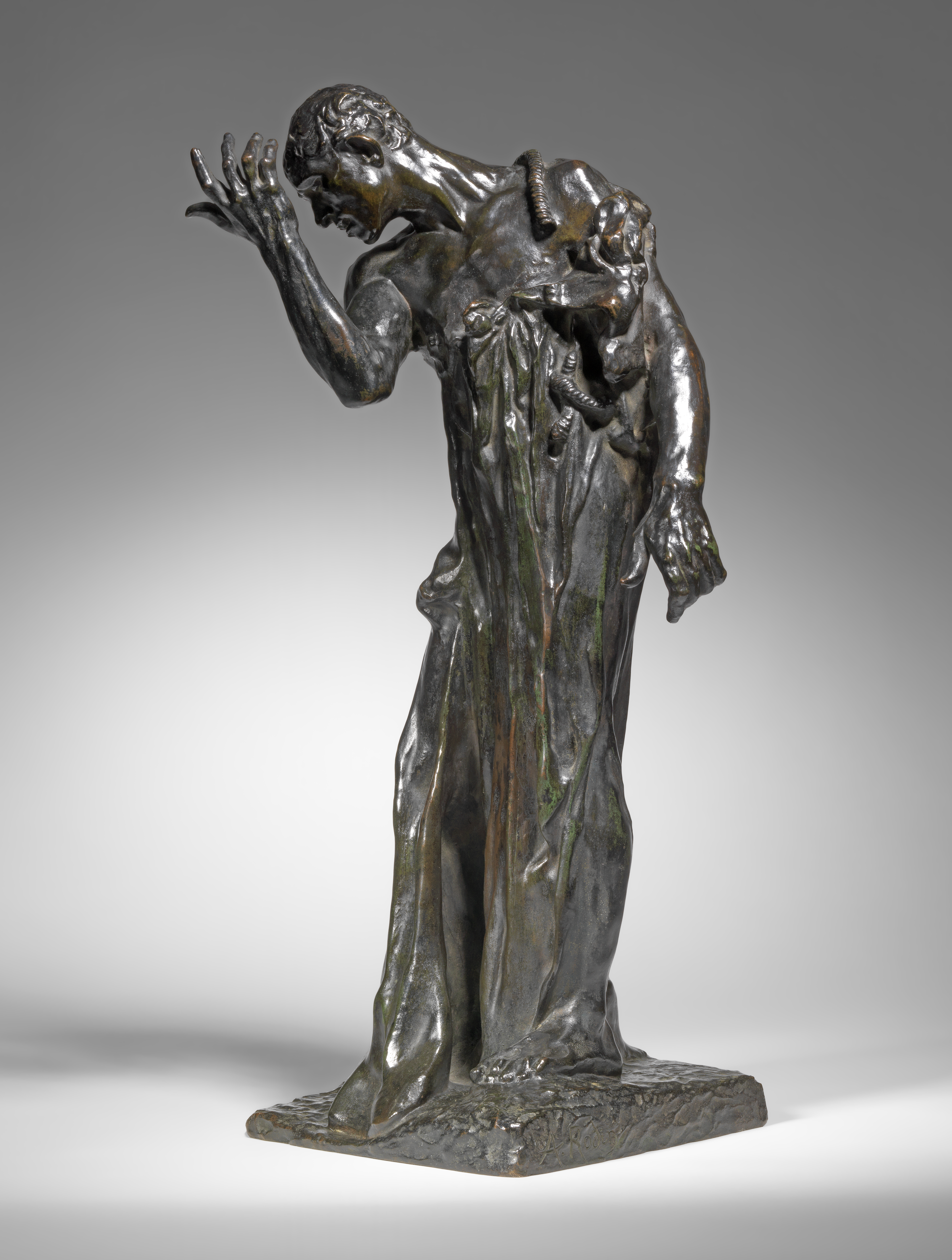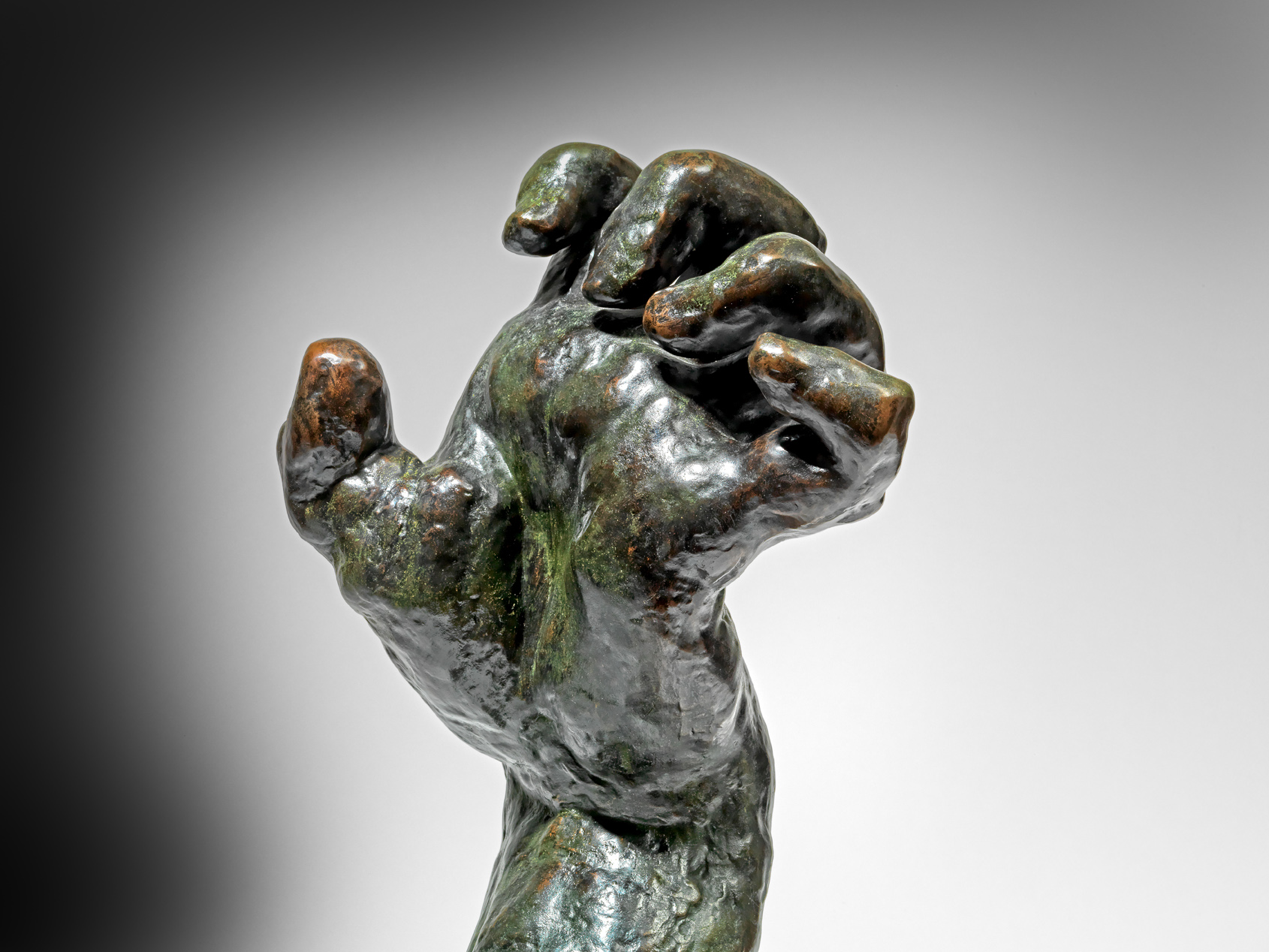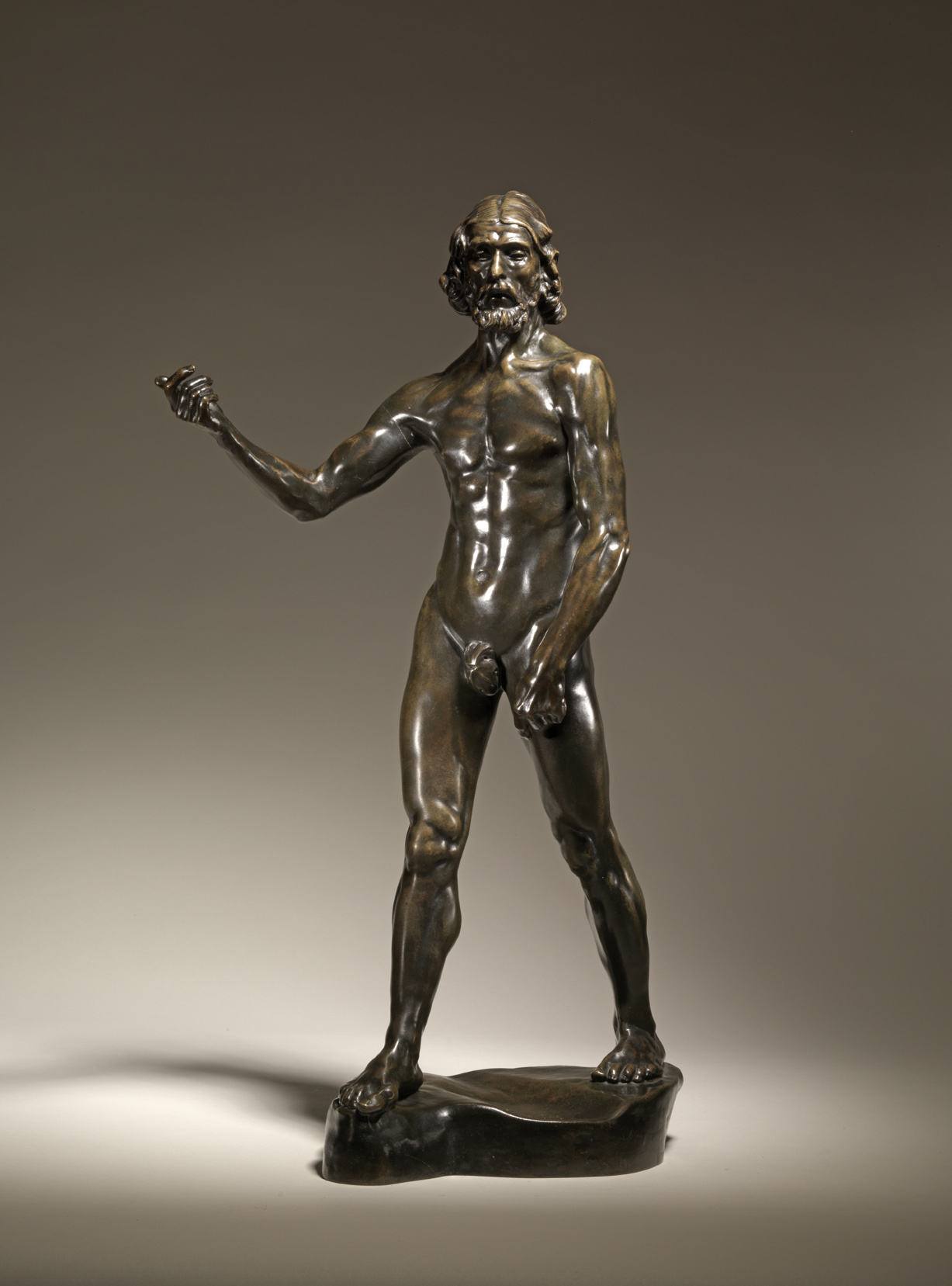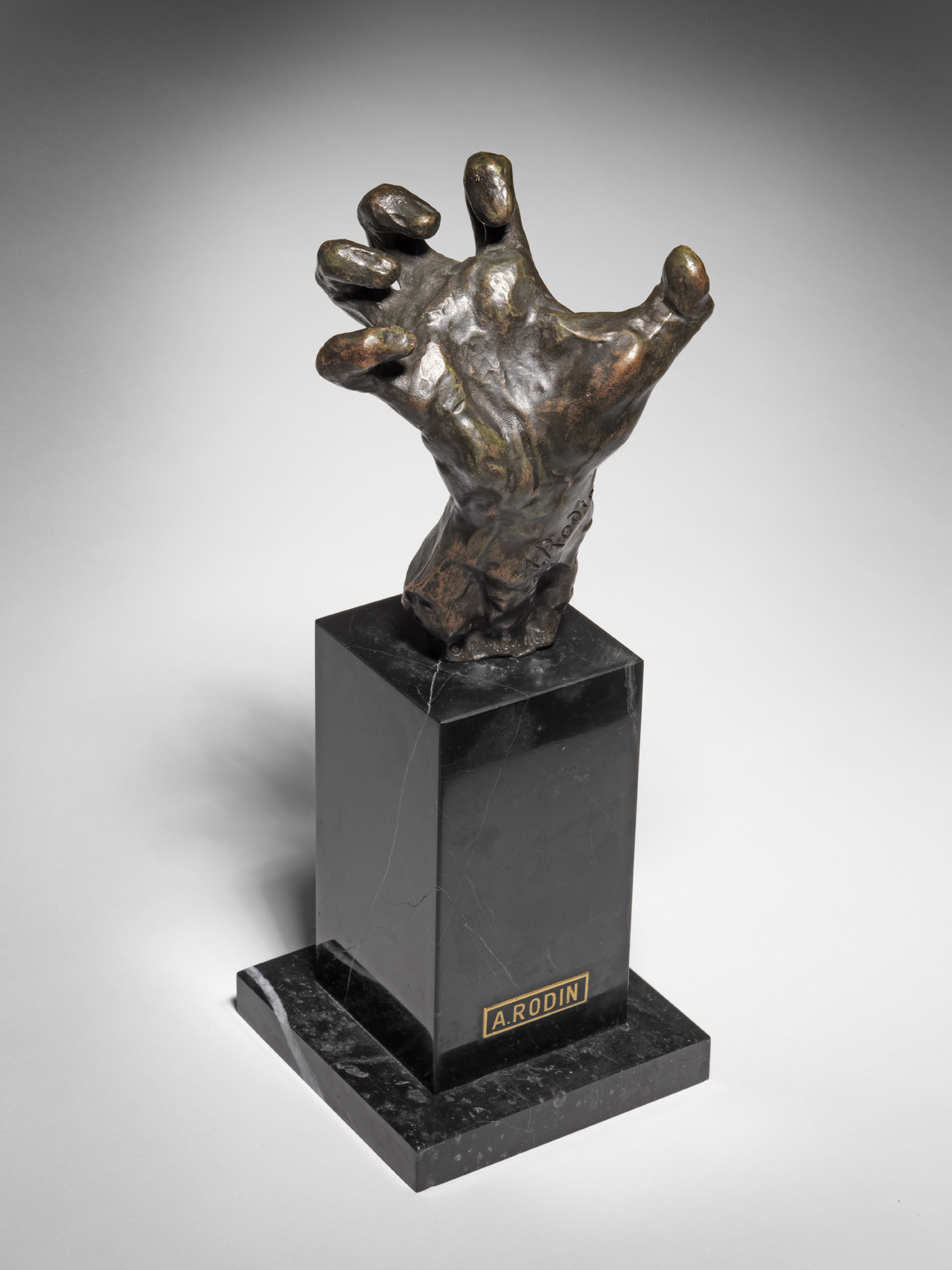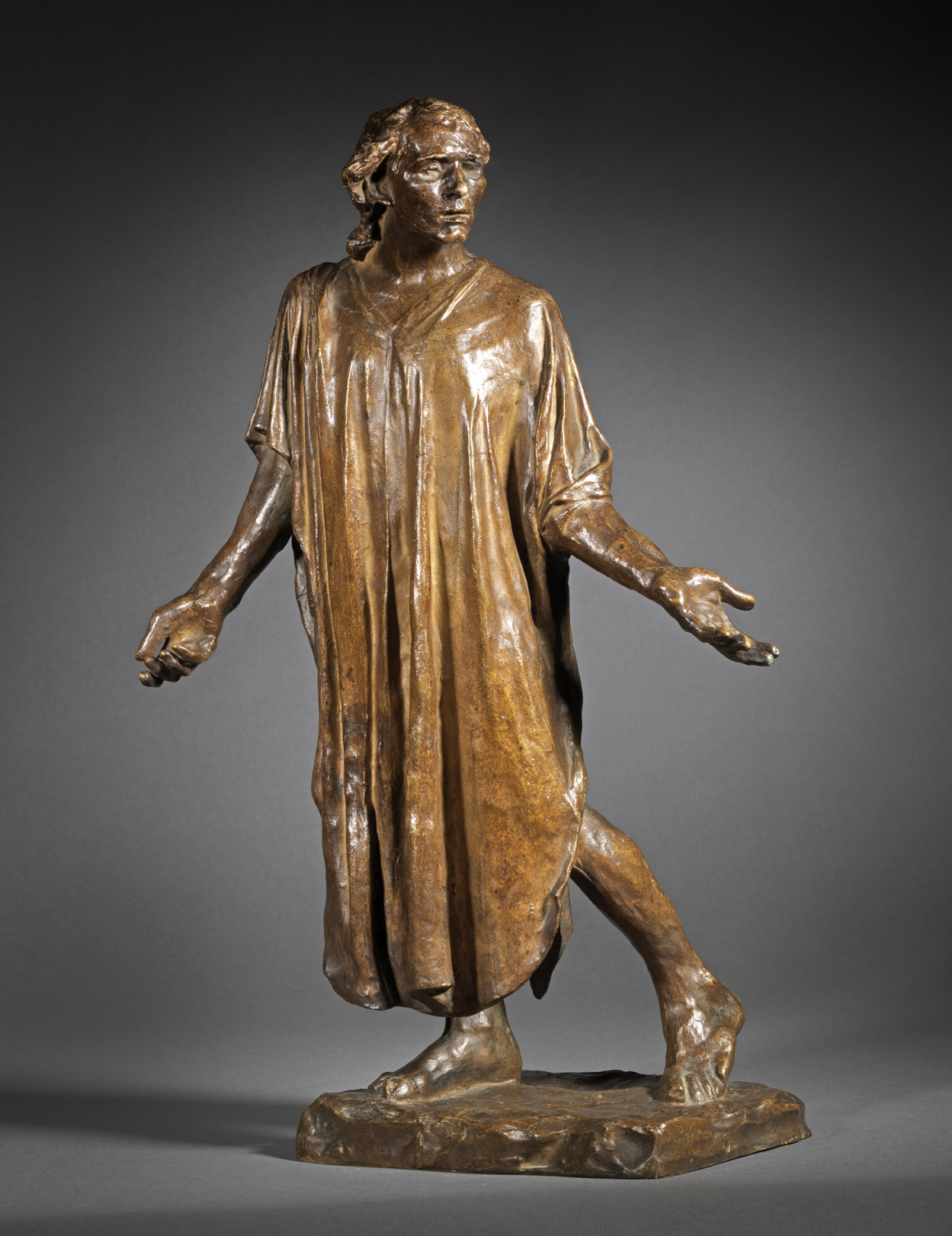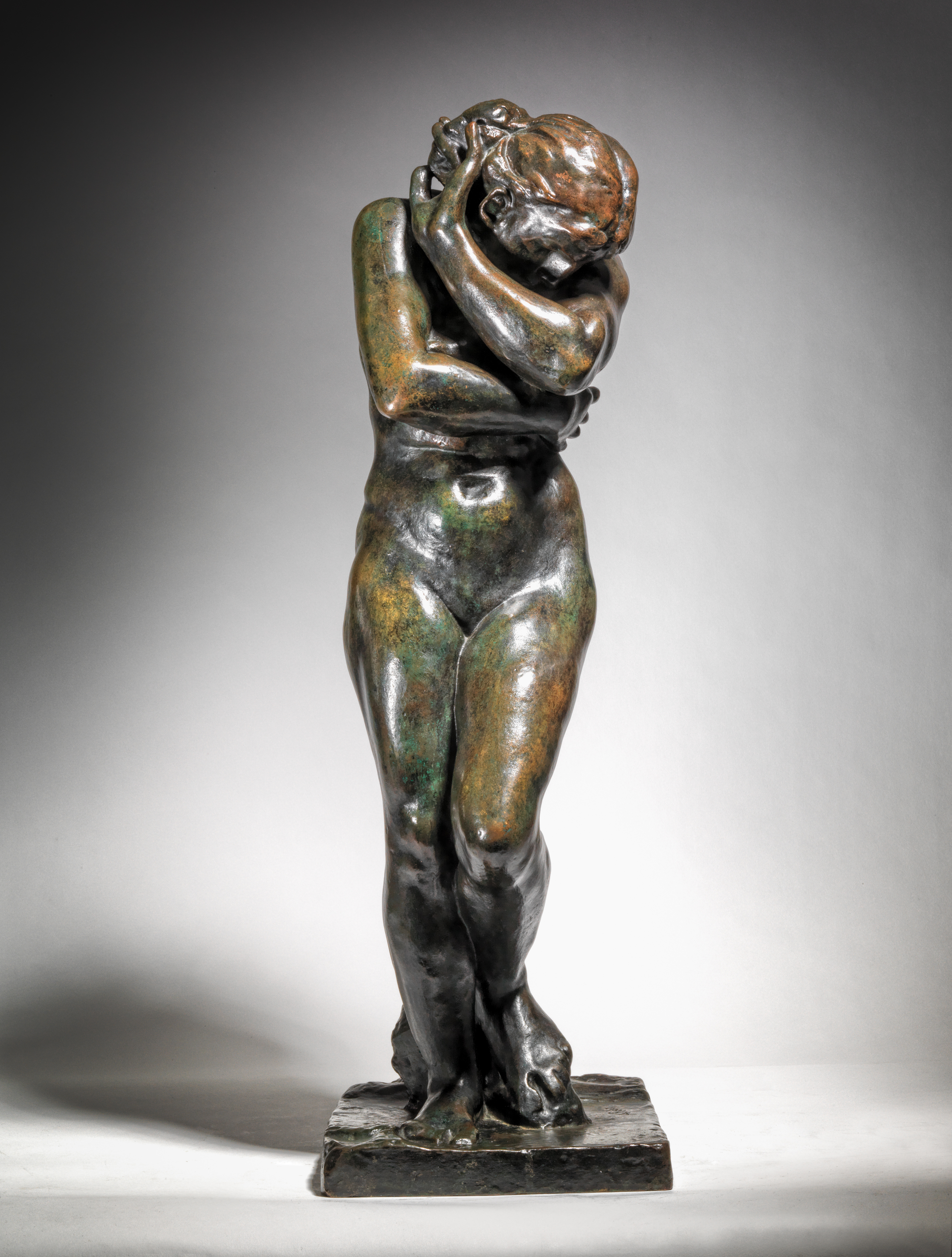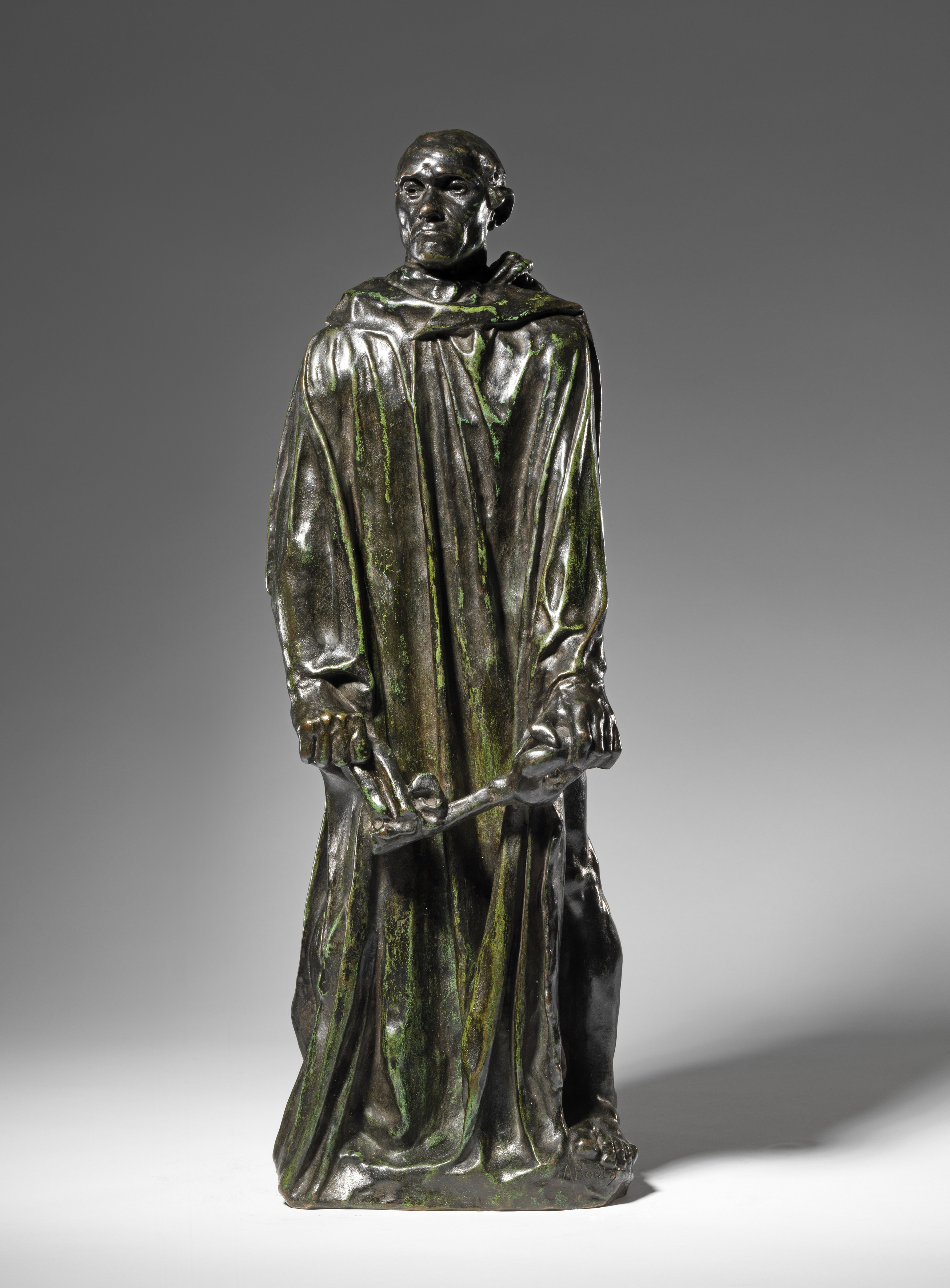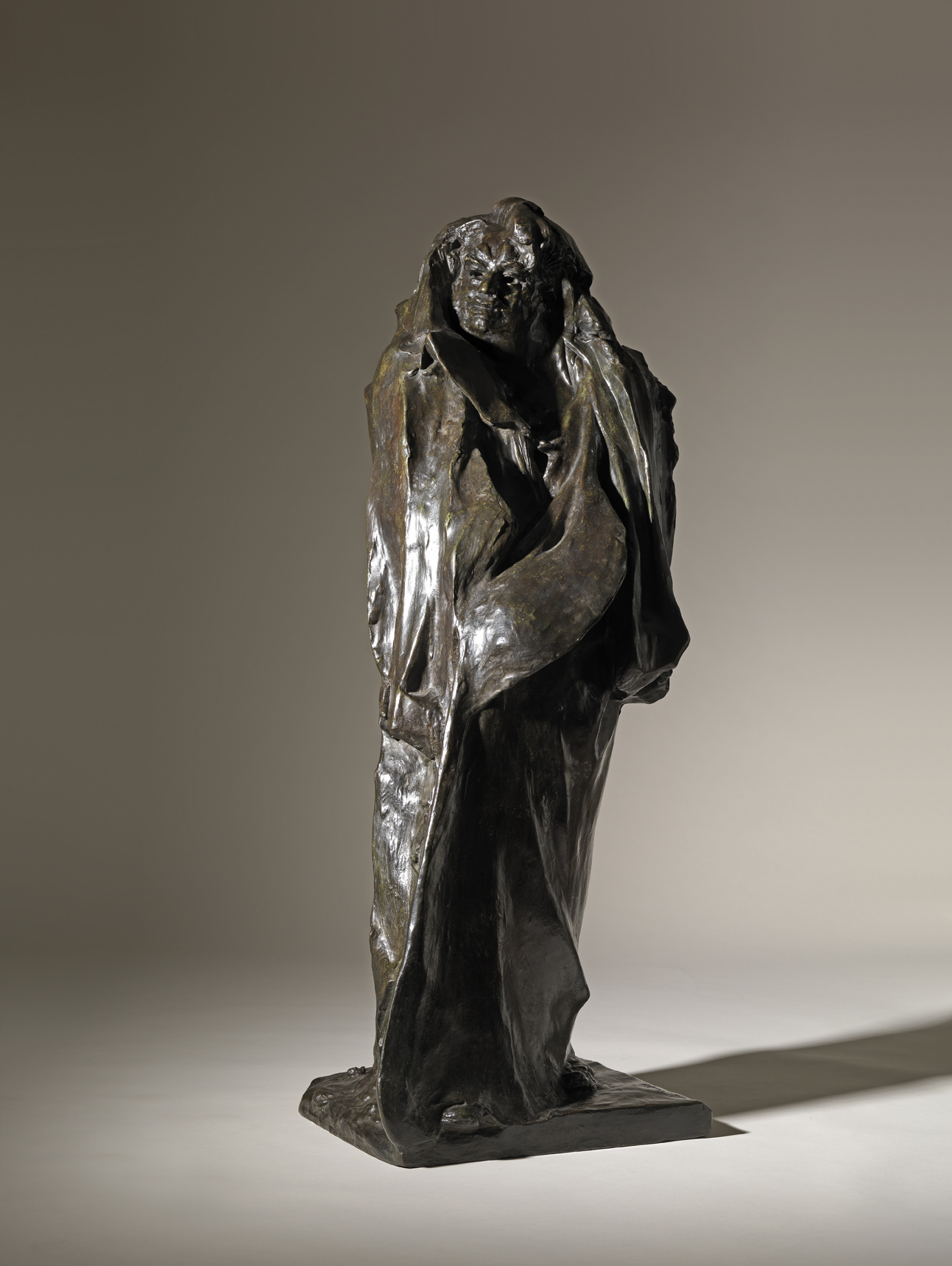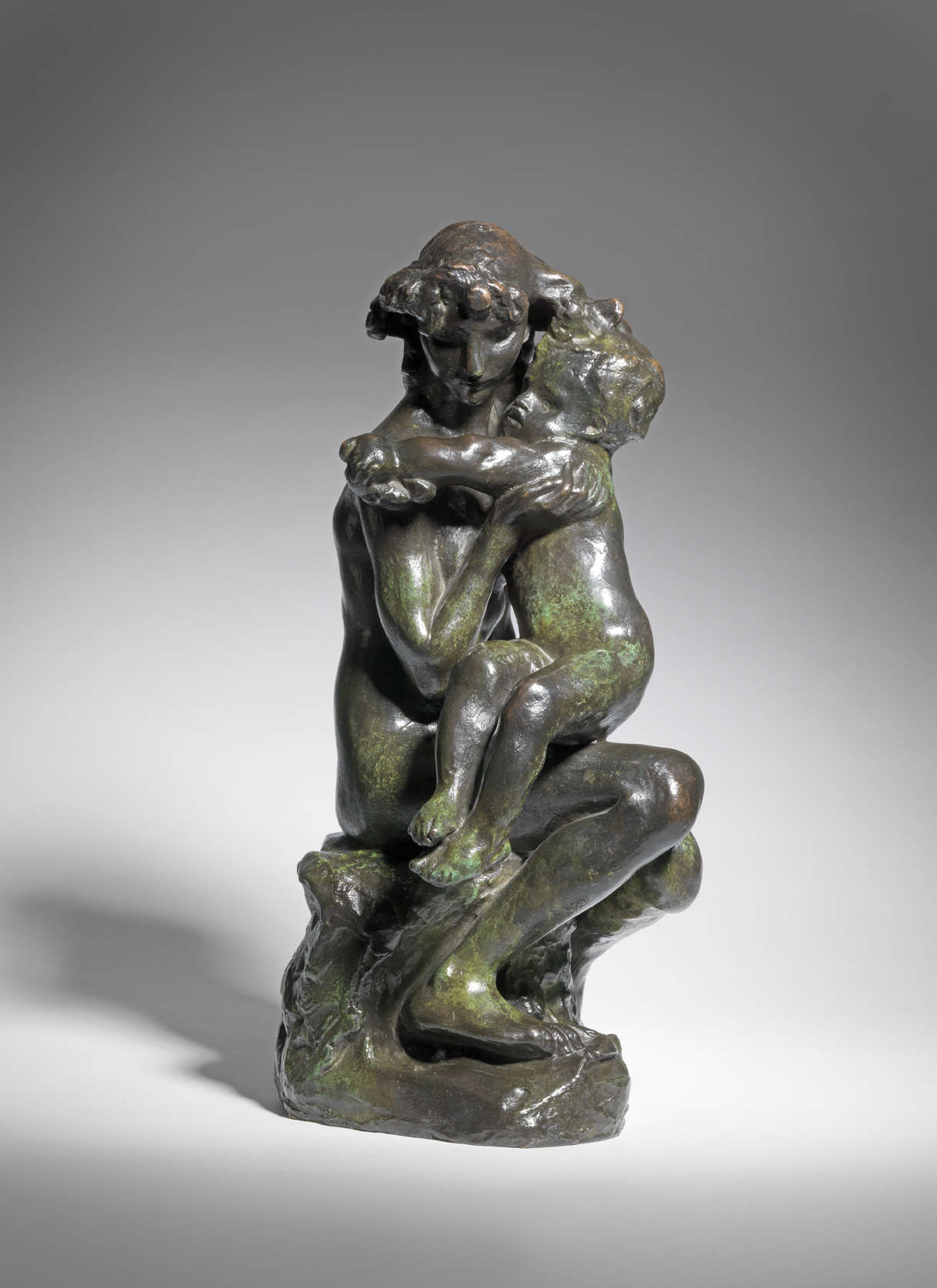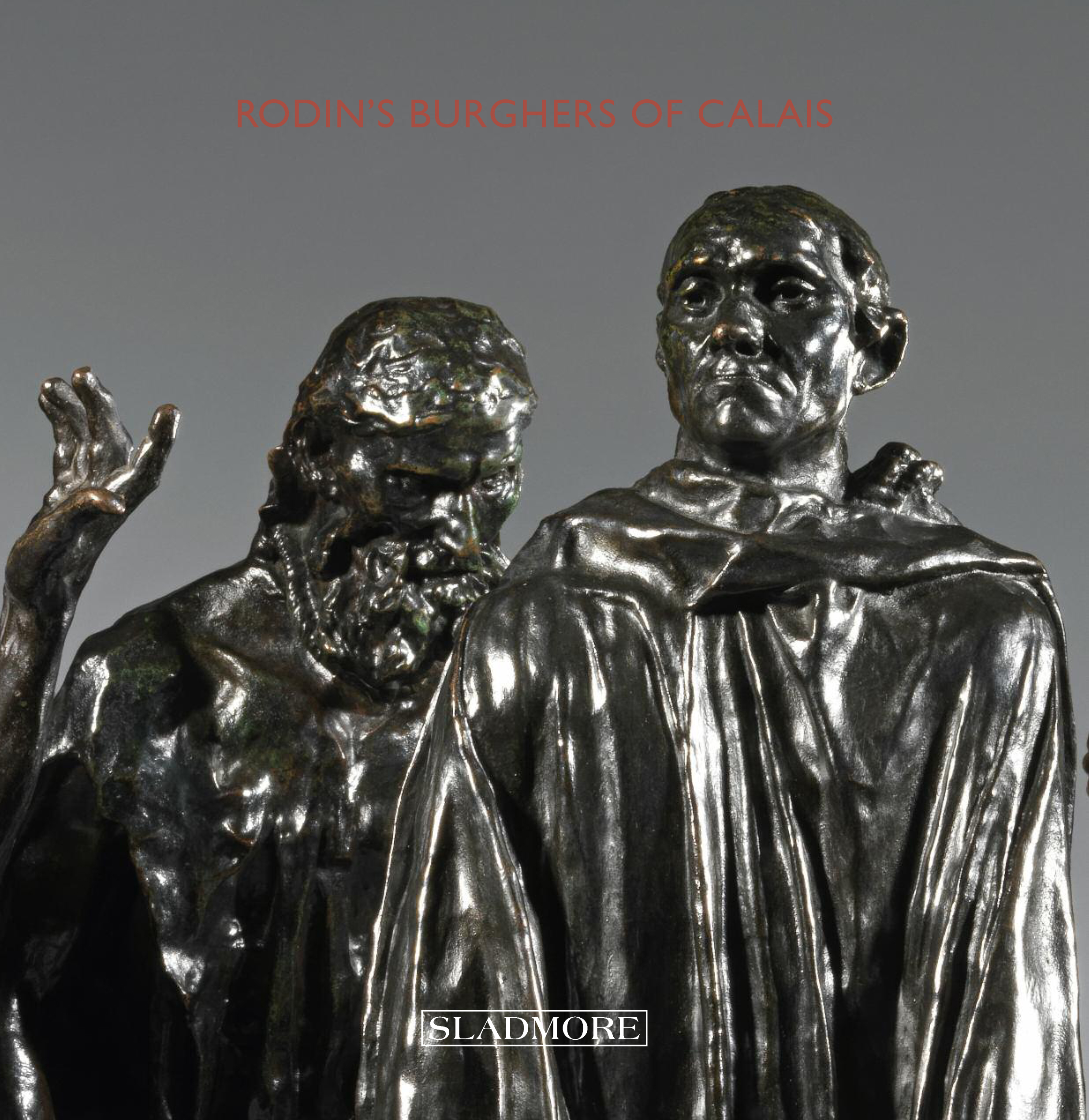Art is contemplation. It is the pleasure of the mind which searches into nature, and which there divines the spirit of which nature herself is animated. – Auguste Rodin
Bronze is a material well suited to Rodin’s sculptural style because it rendered all the subtleties of his modelling, as well as the vibrant movement of his compositions, without losing any of their lightness. This great talent for modelling, which characterised the work of Rodin during the 1880’s reached its peak with the 1890 Salon.
Later, he deliberately chose to simplify forms and planes, and perfected other techniques based on assembling existing fragments. This method enabled Rodin to build up, during the highly creative years devoted to ‘The Gates of Hell’ a vast repertoire consisting of several hundreds of figures and limbs of figures which he was to use in endless variations. Sir Gerald Kelly recorded “Small things, half life-size, and he never threw away a single one… They were arranged in shallow drawers… which had to be opened with great precaution so that they did not get stuck, and there were all these tiny hands, I loved to look at them. And he (Rodin) showed me the hands, and we picked one or two that were particularly good. I remember him holding a small hand in each of his and saying, ‘How good they are!’ with a big smile”.
More than any other sculptor, Rodin took full advantage of the possibility of modifying a work in one way or another.
Auguste Rodin is widely considered to be one of the greatest and most prolific sculptors of the twentieth century. His artworks were so innovative and unconventional that Parisian art critics initially denounced them. Despite these rejections, Rodin’s works were well received outside of France and eventually won the recognition of his nation.
Born in Paris in 1840, Rodin expressed an interest in art from an early age. At the age of fourteen he attended ‘la Petite École’, a school for drawing and mathematics. However, in 1862 devastated by the death of his beloved sister, Rodin turned towards religion and joined the Order of the Holy Sacrament. The following year, he realised that religion was not his calling, and returned to Paris.
After a brief period as a corporal in the French National Guard, Rodin travelled to Belgium and then Italy, where he studied Michelangelo’s works. He was greatly impressed and influenced by the Italian sculptor’s portrayal of muscles and human body. Contrary to the artistic tradition of his time, Rodin believed that sculptures should reflect the subjects as they truly are, and not as the ideal that they could be.
In 1877, Rodin exhibited his masterpiece L’Age d’Airain’ also known as ‘the Age of Bronze’ in Brussels and Paris. This realistic sculpture was not well received, as critics accused him of casting it directly from living models, instead of sculpting it. In time, Rodin’s true genius was recognised and the French government purchased it as the first state acquisition of his work. In 1880, the government commissioned Rodin to sculpt the entrance of the planned Museum of Decorative Arts. This project, called ‘La Porte de l’Enfer’ or ‘The Gates of Hell’ was inspired by ‘The Inferno’, the first chapter of Dante’s Divine Comedy. The museum site was later moved from the banks of Seine to the Louvre, and Rodin’s commission was cancelled.
Despite the setback, Rodin continued to work on this project and created one hundred and eighty-six figures. These mainly represent scenes and characters from the famous poem. Some of them, such as ‘The Thinker’, a portrayal of Dante himself, and Adam and Eve, are amongst Rodin’s most celebrated artworks. ‘The Kiss’ was originally part of ‘The Gates of Hell’ until Rodin decided that the sculpture’s joyful nature conflicted with the theme. Rodin never finished the project and the statues were cast in bronze only after his death.
Rodin’s most controversial artwork, ‘Balzac Nude’, was created for a commission in 1891. This sculpture of the famous French writer drew criticisms and hateful comments from French papers for the next decade. Eventually, the commission was given to another sculptor and the resulting statue was installed at the Avenue Friedland in 1902. Rodin refused to sell his Balzac despite numerous offers. It was not until many years after his death that the sculpture was placed at the intersection of Boulevards Raspail and Montparnasse and appreciated for the masterpiece that it truly is.
By the early twentieth century, Rodin was so established that the Paris World Exhibition gave him his own pavilion where he exhibited 170 sculptures. Major museums and collectors from around the world acquired his artworks which brought him huge acclaim and financial success.
In 1908 Rodin moved his studio to the ground floor of the Biron Hotel, which was later established as the official Rodin Museum in 1919. Rodin died here on November 17, 1917 at the age of 77.
Artworks
View all Artworks >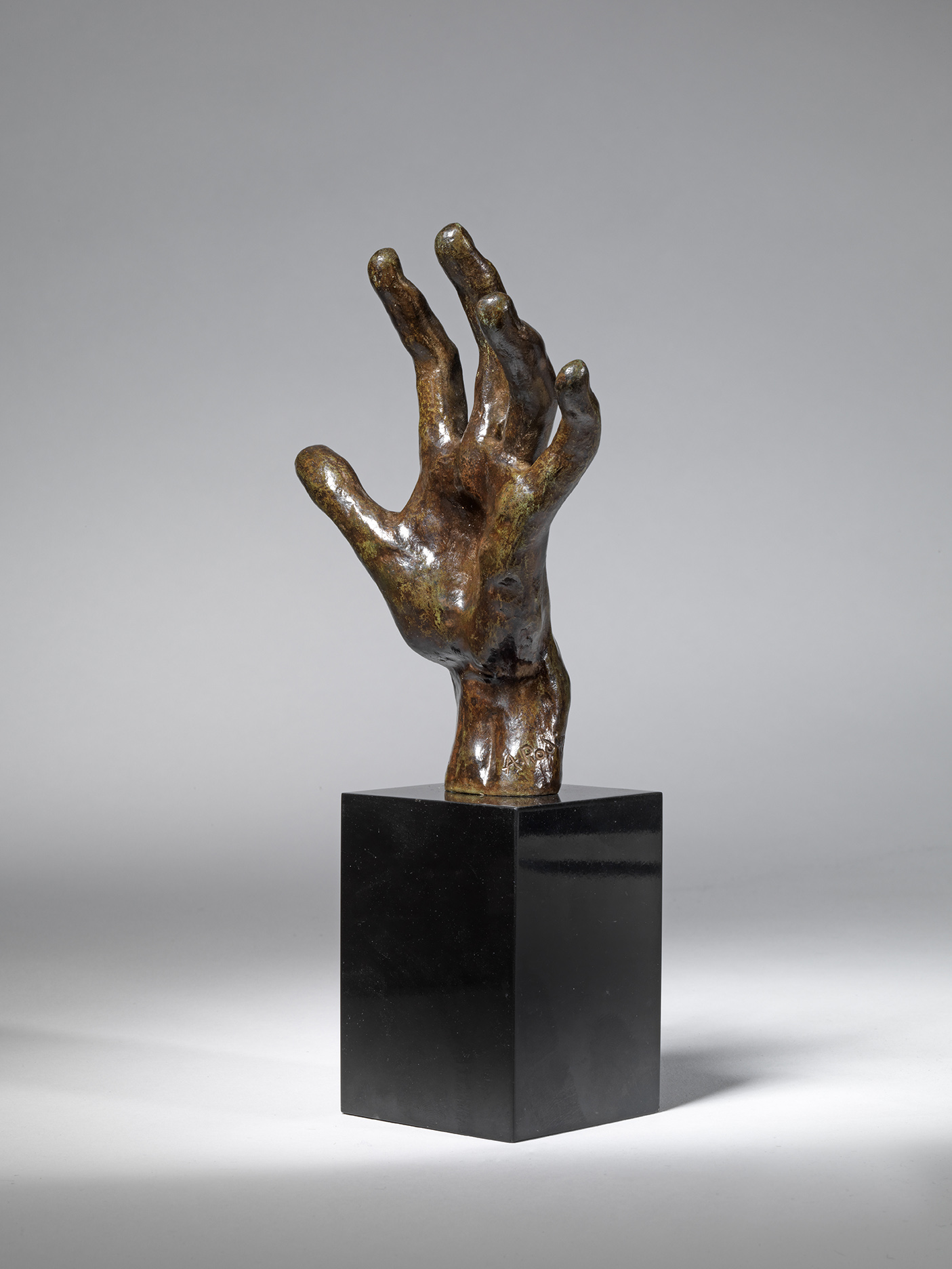
Hand of a Pianist, Main Gauche no 2, 1900-1905
Auguste Rodin
A fine quality, early twentieth century bronze model of a hand of a pianist entitled ‘Main Gauche no. 2’ by Auguste Rodin (French, 1840-1917). This […]


